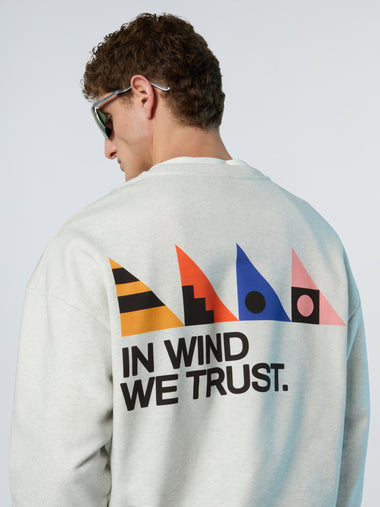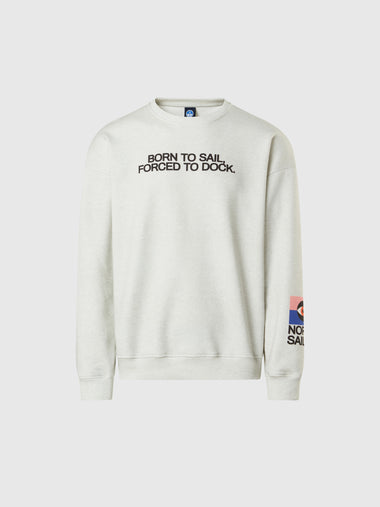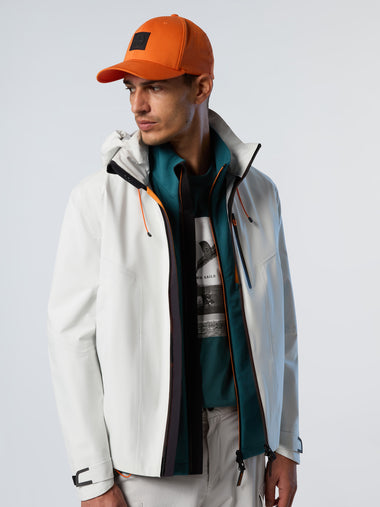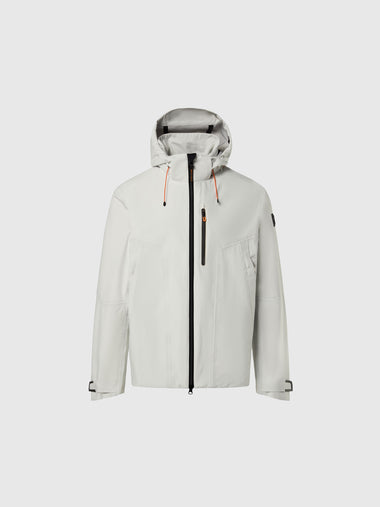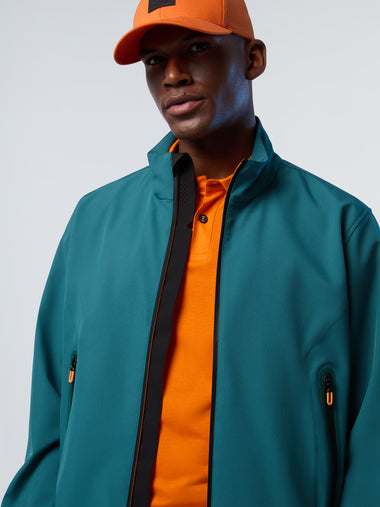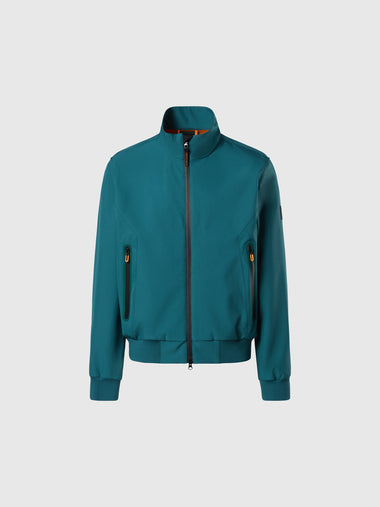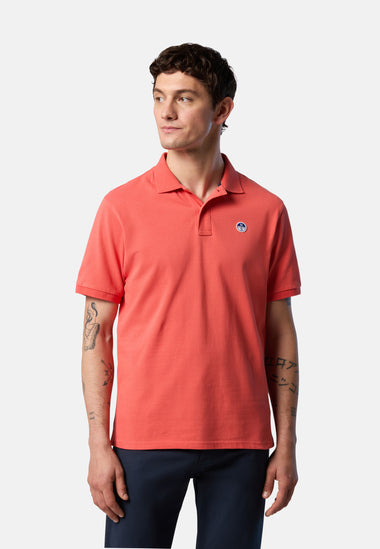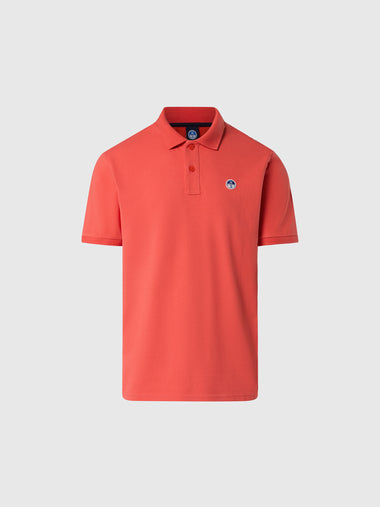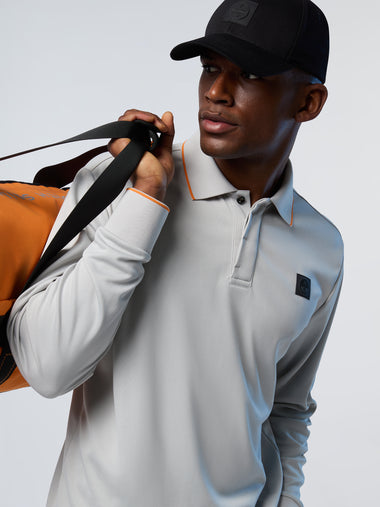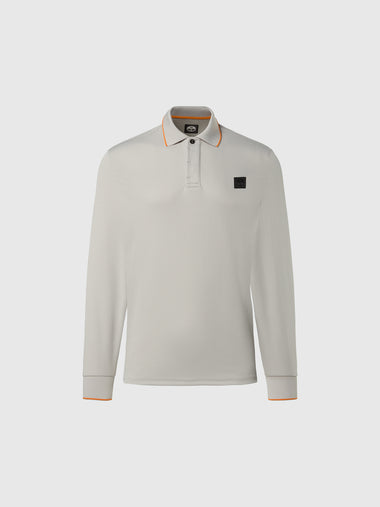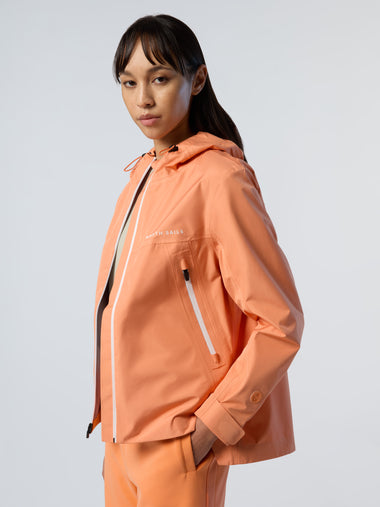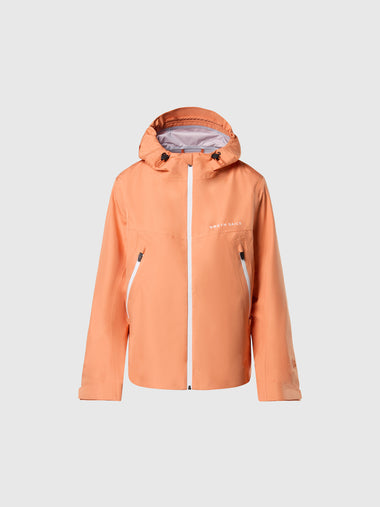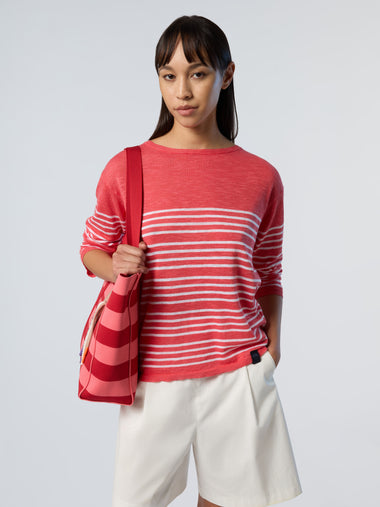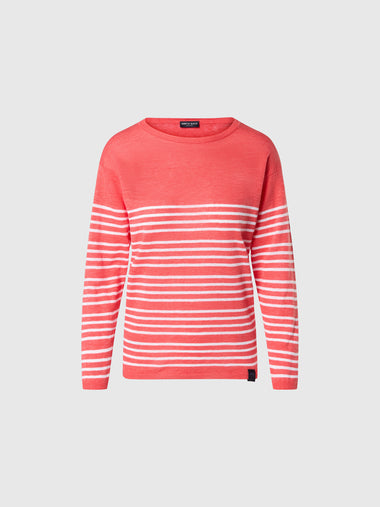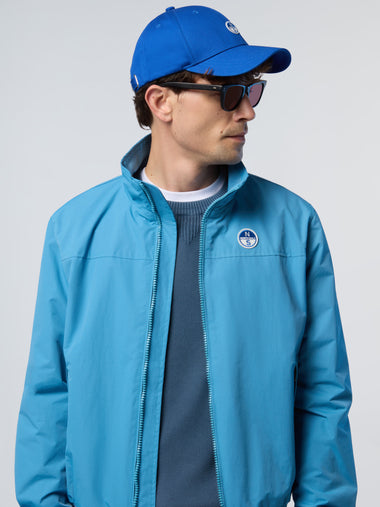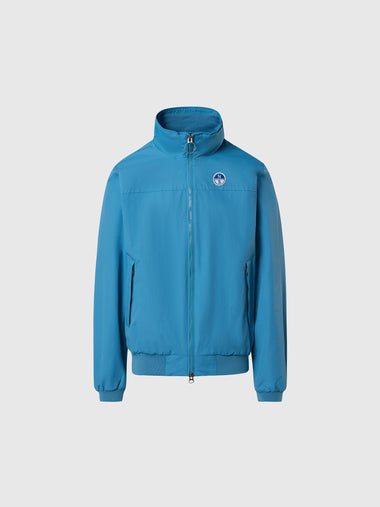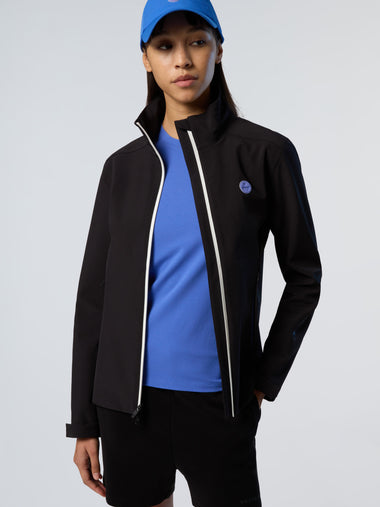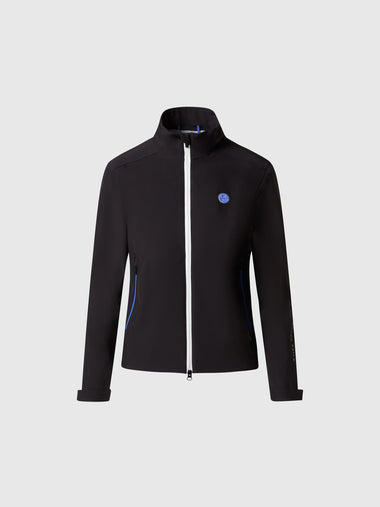NORTH SAILS BLOG
Tout
Events
Guides
News
People
Podcast
Sustainability
Tech & Innovation
Travel & Adventure

AMERICA'S CUP FIRST IMPRESSIONS
The America's Cup kicked off with its first Preliminary Regatta in Vilanova i La Geltrú, Spain. Sailed in the new AC40 one design class, this event was a milestone in the long road to the 37th edition of the famed race which will be sailed in Barcelona from August to October 2024.
READ MORE
READ MORE
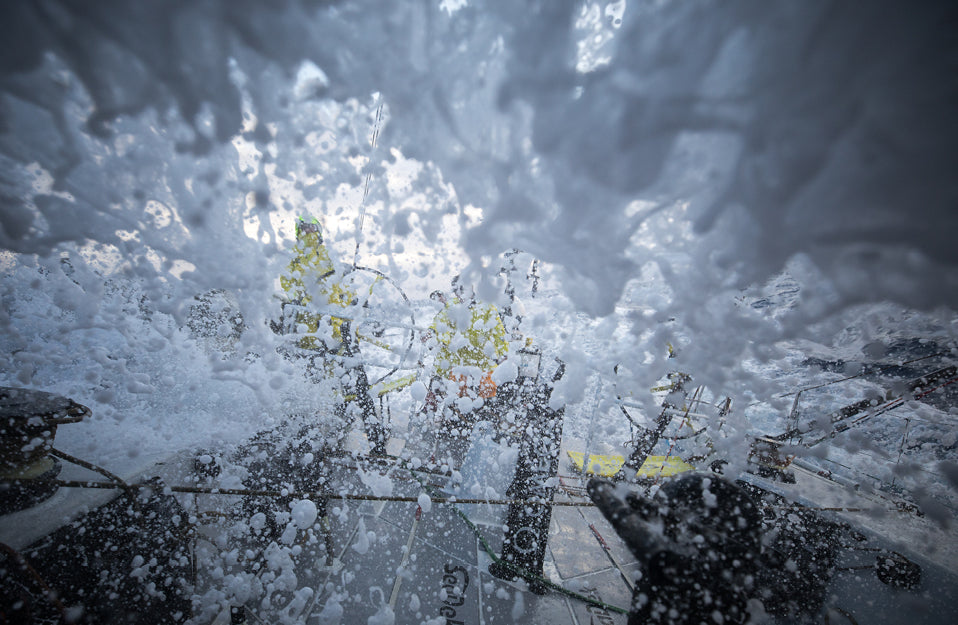
NORTH ON SOUTH: TALES FROM THE SOUTHERN OCEAN
NORTH ON SOUTH: TALES FROM THE SOUTHERN OCEAN
Legendary Round-the-World Sailors Preview Leg 3 of The Ocean Race
It was a straightforward question, put to three of the most experienced offshore sailors on the North Sails team, all of whom have made multiple forays on round-the-world races into the mythical, mystical Southern Ocean. The legendary body of water on the planet’s southernmost reaches includes Cape Horn at the very tip of South America, a rounding of which many mariners believe is a crowning sailing achievement akin to an alpinist summiting Mount Everest. Simply put, what immediately comes to mind when hearing those two words: Southern Ocean?
“Lack of sunlight. Gray skies. Long nights. Short days,” said Ian Walker, the two-time Olympic medalist and America’s Cup veteran who won the 2014-15 edition of the Volvo Ocean Race as skipper of Abu Dhabi Ocean Racing. “It’s a bit of a love-hate thing. On the one hand, it can be the best sailing you’ve ever done in your life. On the other hand, I remember some pretty miserable times when it’s windy and cold and you just can’t wait to round Cape Horn and turn north and get out of there.”
“Nasty. Lonely. Out of your comfort zone,” said North’s president Ken Read, who twice served as skipper in a pair of Volvo Ocean Race campaigns. “People can talk until they’re blue in the face about it, but until you get there, you can’t understand what a different feeling it is to sail there. The albatrosses are taunting you. The interior of the boat is just raining with moisture and it’s freezing cold. Your sleeping bag is soaked. It’s just relentless. That’s another good word for it. Relentless.”
📸 ©Amory Ross / Volvo Ocean Race
“Cold. But beautiful,” said Dutch sailor Bouwe Bekking, who has rounded the Horn an incredible nine times in round-the-world races, including a quartet as skipper. “It’s horrible and beautiful at the same time. There’s hardly anybody else there, one or two crazy fishermen, and it’s always a challenge. But I love that part of the world. It’s so real. I think the rest of the planet has been treated by human beings in ways it shouldn’t be. But the Southern Ocean? It’s pure. It’s a special place.”
Sometimes mesmerizing, oftentimes appalling, the Southern Ocean—loosely defined as the southern waters known as the Roaring Forties, Furious Fifties and Screaming Sixties for the bands of latitude they encompass, with the continent of Antarctica the southernmost border—is especially relevant right now as the IMOCA fleet in the current edition of The Ocean Race are in final preparations for the upcoming, record-breaking Leg 3 from Cape Town, South Africa to Itajaí, Brazil.
Scheduled to begin on February 26, the 12,750 nautical-mile voyage, which will leave to port the trio of great southern capes—South Africa’s Cape of Good Hope, Australia’s Cape Leeuwin and formidable Cape Horn—is expected to take over a month and represents the longest distance in the contest’s 50-year history. While the leg may be treacherous, it counts double in terms of points, which also makes it potentially very rewarding: The first set of points will be awarded for the order the boats pass longitude 166° 25’ East (close to the western tip of New Zealand) and the second set for the finishing order in Itajaí.
So what, exactly, can The Ocean Race crews expect to encounter as they depart Cape Town and steer west into the open, watery void? If the experiences of Walker, Read and Bekking are any indication, a little bit of everything.
Walker in particular, has tasted exalting highs and devastating lows. The latter occurred in the 2011-12 running of the race when the boat he was skippering, Abu Dhabi Ocean Racing, began to delaminate near what is known as Point Nemo; it’s the furthest spot on the planet from any speck of land, officially making it the world’s most remote location. “We came off a couple of big waves and they delaminated a section of the hull measuring about ten feet by four feet in the middle of the boat,” he said. “We made a temporary repair by actually bolting the skins back together. We scavenged as many bolts as we could, heeled the boat onto its side, and drilled through the hull, with a guy on a harness on the other side to put the bolts through.” Right. Just another day at the office. A pit stop in Chile was made to conduct a more lasting repair.
But in the race’s next edition in 2014-15, again in command of the Abu Dhabi crew, it all came together for Walker in a winning effort, which included a 24-hour distance record of 550.82 nautical miles. Sailing at such high speeds, he recalled, was a bit of a balancing act. “I remember the speedo flashing over 40 knots,” he said.
📸 Matt Knighton / Abu Dhabi Ocean Racing / Volvo Ocean Race
“Whoa,” he continued. “Any time you’re averaging in the low twenties you’re regularly sailing at 30 knots. Doing a record run is about two things really: keeping a fast average speed and sailing in a straight line. When you’re screaming down the face of a wave there’s a seamanship side to it. You need the right sail plan for the conditions, so you’re neither pooped from astern or by breaking waves, but not going so fast that you go down the mine so hard you wind up end over end at the bottom of a wave. If you go too fast you start catching waves that sometimes you wish you hadn’t caught!”
Before he skippered the PUMA Ocean Racing entry in the 2008-2009 and 2011-2012 editions of the Volvo, Read actually got his first exposure to the race in the final legs of the 2005-2006 race with the Ericsson Racing Team. And while he didn’t see the Southern Ocean in that stint, the race left a profound impact on him. “After my third America’s Cup, I was tired of going around the buoys and was looking for a change,” he said. Man, did he get one.
“I got off Ericsson after the Transatlantic leg and asked myself, ‘Do I really want to do this again?’ Part of me was terrified and another part was like, ‘That’s the most interesting thing I’ve ever done in my life.’ I had two guys on my shoulders, one saying, ‘Don’t be an idiot’ and the other going, ‘Do it, you’ll love it the rest of your life.’ I let that guy win. And he was right. Getting involved with the Volvo was one of the great sporting decisions of my life. It changed my life and it’ll always be changed because of those adventures.”
It was in his second PUMA campaign, deep in the Southern Ocean, that he endured one of those defining adventures. “We knew three days before leaving New Zealand that we were going to get our butts kicked,” he said. Which is precisely what transpired. “At one point we got hit by two really bad cold fronts. We sailed the first one with a storm jib and three reefs. Then there was a day of nice sailing and then like nine days in a row of 35- to 55-knot winds. Three of our drivers were injured and in their bunks. A couple of boats almost sank. It was one of the few times in my ocean-racing career that we pulled back. We actually took down the sails and backed off. Thanks for stirring up all these memories. Now I need a Xanax.”
For each and every Southern Ocean boat and competitor, the leg has one common denominator: No matter what route you’ve chosen, or how wonderful or terrible the conditions you’ve encountered along the voyage, everyone must round Cape Horn, the legendary promontory at 57 degrees South.
📸 Team Brunel / Volvo Ocean Race
“If you’re crossing the Atlantic and see a big weather system coming, you have choices,” said Walker. “You can go north or south. And depending on the quality of the weather information you have, you can pretty much choose the maximum wind speed you want to sail in by positioning yourself accordingly. The thing I always say about Cape Horn is you’ve got no choices. You’ve got to go around it.
“You’ve got a lee shore on the South American coast so you can’t run for cover,” he said. “You’ve got this change in the ocean shelf rising up, and the massively decreasing depth combined with the adverse ocean currents kicks up a nasty sea state. And there’s often a huge increase in wind strength, as the breeze is blowing uninterrupted around the length of the Southern Ocean before piling up at the tip of South America. It’s this perfect storm of adverse conditions. It’s basically the luck of the draw.”
“I used to call it the funnel,” said Read. “There’s no right turn, no left turn, there’s only straight ahead and that’s it. The weather systems accelerate through there. You know all the history and how violent it can be. You’re jumping into a funnel, and playing Russian roulette at the same time. The funnel’s either going to kick your ass or give you a blessing and let you pass unscathed. Either way, there’s a special bonding moment with the guys after you get around. The relief just washes over you.”
So, with the combined record of over a dozen Southern Ocean passages, what advice can the North Sails crew offer to those headed south for the first time?
“Take somebody with you that’s been there before,” laughed Bekking. “You’re going to make mistakes, but if you can minimize them, your trip will be much better. And the way to make fewer mistakes is to have someone experienced by your side.”
“Preparation is the key,” said Walker. “Being well prepared in what you eat, what you wear, how you look after yourself, it’s all critical. Because once you start to go downhill, it’s very hard to turn around.”
“Getting through it is the most important thing,” said Read. “At some stage you’re going to need to check your ego at the door and just make sure you get through this night or this day in one piece, because you’re going to have one of those experiences. The wind is different. The waves are different. It’s all just different. So use some common sense, live to fight the next day, and you’ll probably be just fine when it comes to the race result at the same time.”
READ MORE
READ MORE
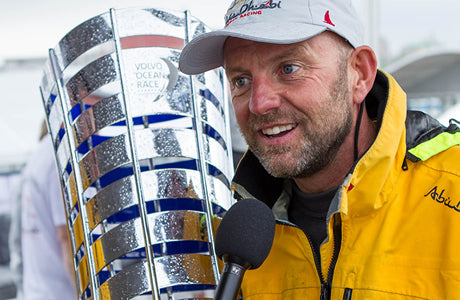
IAN WALKER JOINS THE NORTH SAILS MANAGEMENT TEAM
IAN WALKER JOINS THE NORTH SAILS MANAGEMENT TEAM
Olympic Medalist and Volvo Ocean Race Winner Named North Sails UK General Manager
North Sails is excited to welcome world-renown sailor Ian Walker to their management team. Walker is a two-time Olympic medalist, an America’s Cup veteran, and winner of the Volvo Ocean Race 2014-15 as skipper of Abu Dhabi Ocean Racing. He most recently served as Performance Director to the British Sailing Team, who claimed five medals at the 2020 Tokyo games. Walker’s next career move puts him at the helm of North Sails UK for the world’s leading sailmaker.
“Lowell North founded this business on a simple philosophy – get the best people and commit yourself to make the best product,” says Ken Read, President of North Sails. “Ian sits amongst the best in our sport. He possesses a winning attitude and a level of knowledge that’s invaluable to our brand and all North Sails customers. Having sailed against Ian, I know he’s a fierce competitor and simply a good guy. We’re honored to have him join our team.”
“The expertise from someone of Ian’s caliber is one of the greatest resources we can offer all of our customers,” remarks John Welch, COO of North Sails. “Each North Sails Manager is more than a champion sailor or a sail expert. They become a part of a tight-knit team working towards the common goal of developing superior products and delivering exceptional support for sailors at every level of our sport.”
“North has a long history and rich tradition of being at the forefront of sailmaking,” Walker explains. “Joining North Sails is an excellent opportunity to be an active voice in the marine industry and part of the industry’s leading brand. It’s clear that everyone on the North Sails team has a passion for helping people get the most of their sailing, and my new role presents a unique opportunity to work alongside talented, like-minded sailors.”
Walker’s official start date is August 1st, 2022. He will be based at the North Sails loft in Gosport, UK.
READ MORE
READ MORE
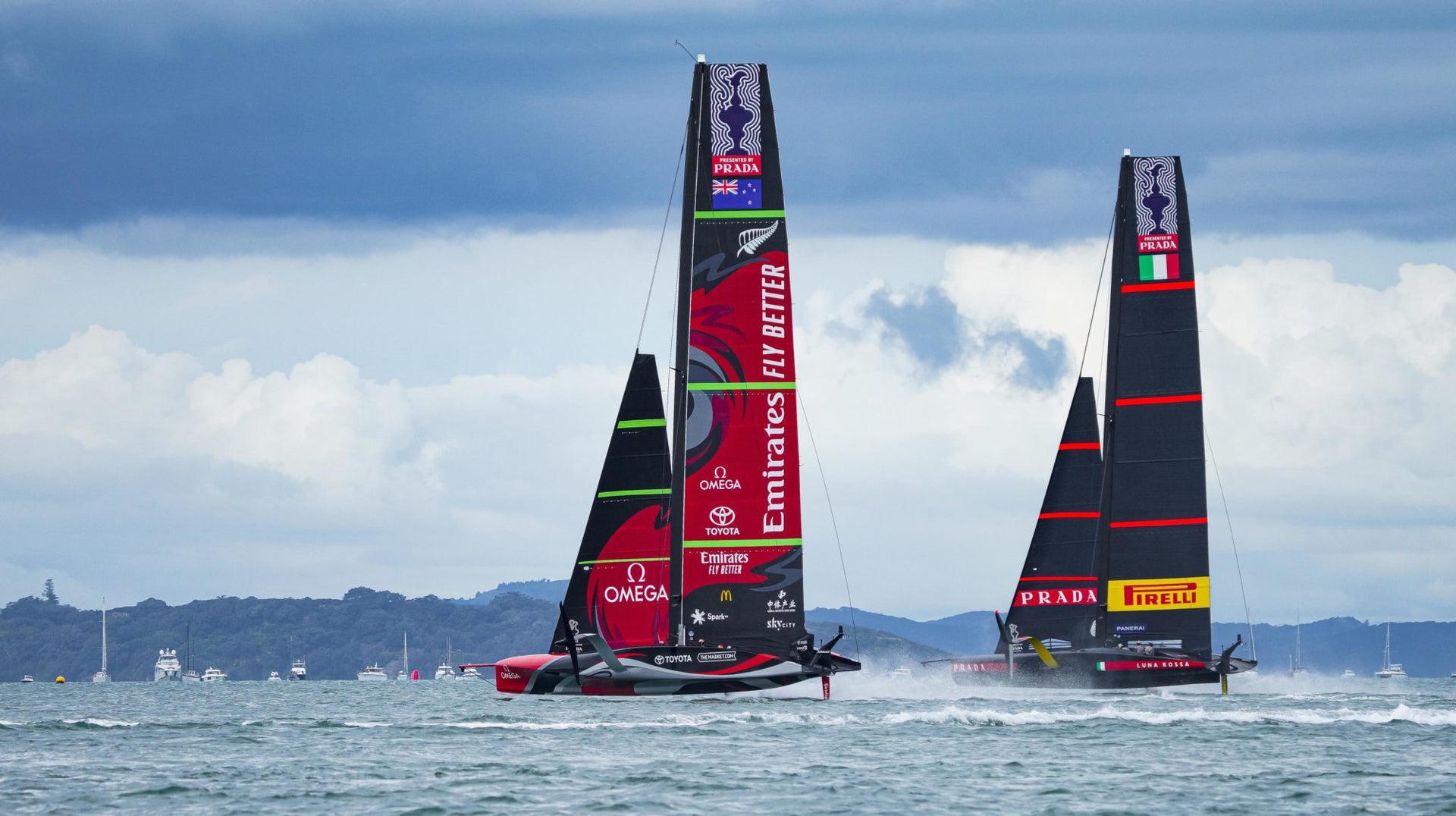
FOUR LESSONS LEARNED FROM THE 36TH AMERICA'S CUP
FOUR LESSONS LEARNED FROM THE 36TH AMERICA’S CUP
North Sails Head of Design and Engineering Debriefs on Our Cup Takeaways
📸 ACE / Studio Borlenghi
It’s been a week since the 36th America’s Cup ended, and we wanted to know what all of this means for the future of sailing and North Sails. We’ve asked North Sails Director of Design and Engineering JB Braun what are the technical lessons that have come up during this America’s Cup cycle… and that could apply to all North sails in the future.
Versatility
“The AC75s are challenging the sail shapes and their range in a more complex way than has ever been done before,” says Braun. “Mainly because of the low righting moment of the boats when they go slow, and their high righting moment when they go fast. When the boats are going slow, their righting moment – their ability to resist heel – is coming from the foils, and those foils don’t work until they’re going fast. So just the boats getting going is a complex process which requires full sails and a low center of effort. And when the boats get going, you want to reduce that power.
📸 ACE / Studio Borlenghi
“In terms of sail design, that leads to different sail structures that power up or de-power. One of the biggest things that you want in a sail is added range, or added optimum application – meaning, to be able to react to a change of conditions if you’re using a given sail. One of the big things that’s going to come out of this America’s Cup is the application of that range. How do you get a sail to be powered up working at very low wind speed, but then have the same sail working at triple or quadruple the apparent wind speed? With normal boats, your apparent wind speed may only go a fraction of that. But when the AC75s are sailing in 12 knots of wind, they’re going to get up to 50 knots of apparent wind. The same sail needs to change its shape quite a bit to be optimum at the low and the top ends.
“Having a sail that can morph itself and have a wider range reduces the uncertainty with selecting a sail. This is an area that’s going to come out as being a big plus for a lot of sailors, the top racers and the Wednesday night races, TP52, ORC fleets, championship racing, and more.”
Materials
“The other area that’s going to be interesting to come out of it is the material menu we have at North Sails. Every material has different properties: some are designed to reduce stress, some are designed to have added tenacity, while others are able to stretch and recover. Others are very stretchy but have unique properties specific to certain areas of the sails. How these different kinds of materials are used and what they were asked to do through this America’s Cup cycle will be applied to future North Sails products.
📸 COR / Studio Borlenghi
“We might be using different types of material in new ways to achieve that added range we mentioned above. For example, we build carbon fiber sails and that’s the primary strength material, but we also use different types for different reasons. It’ll be interesting to keep learning and further exploring the complex relationship of the different materials in the composite and how they’re working together.”
North Sails Design Suite
“From a technical point of view, each team used the North Design Suites to analyze their design space – the rules, the objectives of the sails, the aerodynamic design space. How did their team go about understanding the problem and then attack solving it with the North Sails software? Because that relates to the North Sails software.”
📸 North Design Suite / North Sails
“We have unique tools set up with the North Design Suite which help answer complex questions. There are powerful tools that we use to help the design process along in aerodynamics, in the loading, in the mast design. Throughout the America’s Cup, the embedded North Sails designers used Membrain regularly as a way to run their very complex simulations. The powerful tool, complemented by the rest of the North Sails Design Suite (Desman, Spiral, Warps, and Flow), was constantly in use to validate design ideas. Throughout the course of the 36th America’s Cup, software guru Michael Richelson, updated and further developed Membrain to keep up with the ongoing development of the AC75.”
“I’m excited by how each team went about it to see what development we want to add to the North Design Suite. And that will set us up to have a more powerful design tool and offer opportunities to help our design and manufacturing teams grow and help refine our product further down the road.”
Mast vs Sails
“The masts all have to be the same shape, the boats have to weigh the same and have the same center of gravity. How you get to that point – that can vary. How and where you use the weight and what you identify as a driving performance factor has massive consequences and lead to major differences! Integration is the key word. Considering each element as stand-alone would be a major mistake and have a negative effect on total performance. That affects everybody that has a sail that integrates with a rig…which is everybody with a boat!”
📸 ACE / Studio Borlenghi
READ MORE
READ MORE
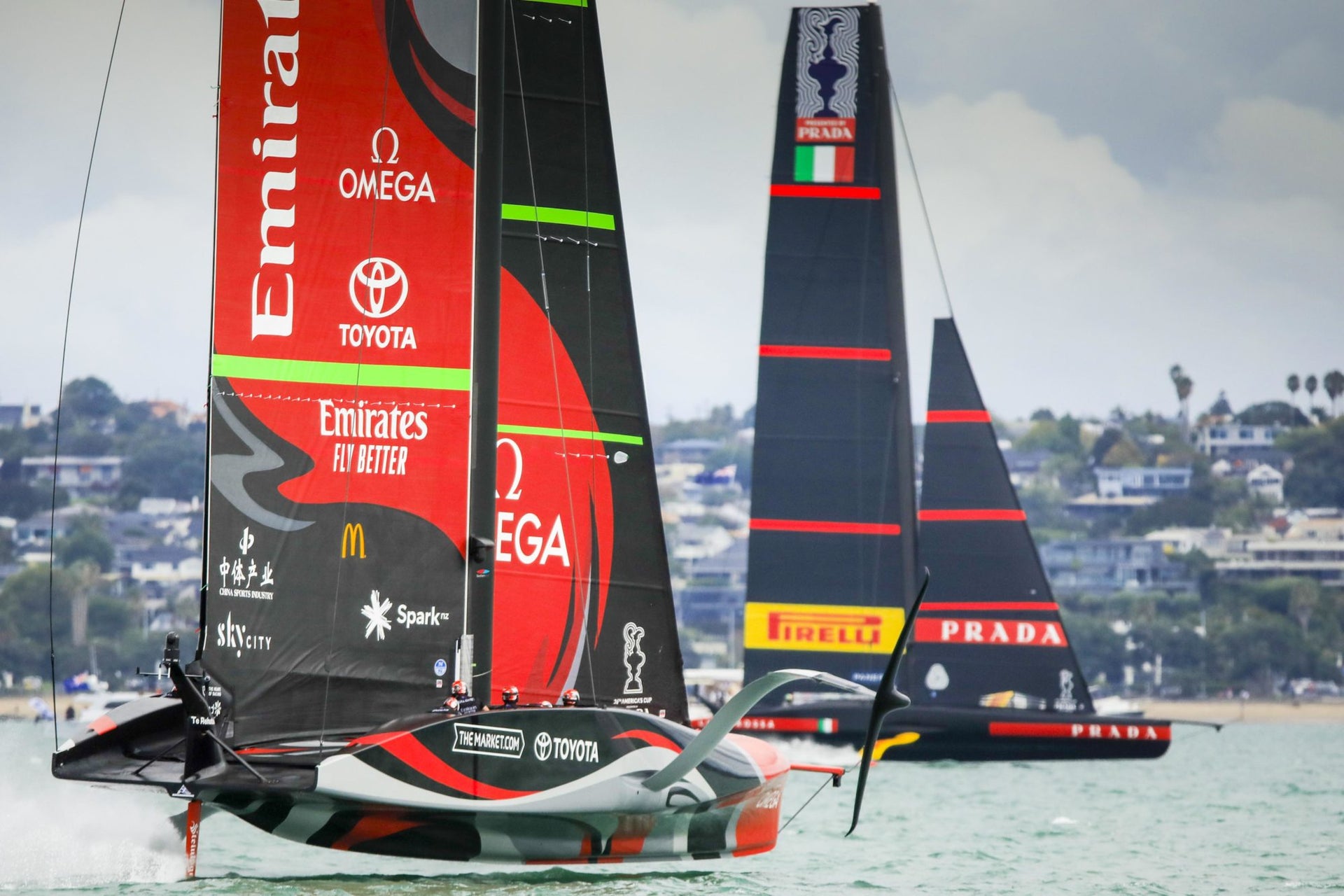
LET'S TALK SAILS: DECISIVE DETAILS & CRITICAL CLUES
LET’S TALK SAILS: DECISIVE DETAILS AND CRITICAL CLUES
Day 6 of the 36th’s America’s Cup was a little windier, a little shorter – one race only – but all the more intense for it.
📸 ACE / Studio Borlenghi
The end is near – the end of the 36th America’s Cup, that is. North Sails and INEOS TEAM UK sail designer Gautier Sergent, who’s constantly studying the AC75s and analyzing their sail choices, shares his notes.
Sergent mentioned “a lot of small details that might be worth paying attention to.” First, the mainsails. “They both kept their big mainsail on despite the 14 to 15 knots of wind. On a course like this, the wind speed varies a lot and it’s the jib size that changes if needed, not the mainsail. That’s because the latter helps balancing the boat’s power and heeling angle.”
With the Cup potentially one race away from the end, he explains that “there won’t be any big changes anymore, but details will be key.”
“It’s interesting to notice how much the aerodynamic fairings have changed on the Luna Rossa Prada Pirella deck since the World Series. They’ve added some fairing on the top and opposite sides of the cockpit to further hide the sailors from the wind and reduce the aero drag. It’s sort of emulating the Emirates Team New Zealand sunken cockpit.
“It also helps have a cleaner flow on the sails, making them more efficient. The Luna Rossa guys have filled every recess and hole so the airflow doesn’t break and generate turbulences. Everything is as tightly fitted as possible around the sailors. On the AC75s, the deck and the sails are designed as one single package and the Kiwis had integrated this in their boat concept. But the Italians have done a nice job developing these fairings to efficiently guide the airflow around the deck and sails.”
Speaking of clear trails, Sergent notices some work has been done on the Emirates Team New Zealand’s mainsail clew. “After the technical crew worked on it this week, the fairing around the clew of the main was noticeably cleaner and its trailing edge thinner. Their mainsheet ram is placed between the two skins, making the trailing edge thicker. You can see the telltales getting sucked in between the two skins. In that regard, the Luna Rossa set-up is much cleaner. But as we explained previously, the Kiwis have also lowered their deck and extended the sail further down to gain sail area – everything is connected!”
Perhaps less technical but an obvious point of difference, the windows cut out in the Luna Rossa Prada Pirelli’s sails. “The Italians have two big windows, one in the main and one in the jib, while the Kiwis don’t. It’s a small thing, but it means they’ve chosen to trust the guys on the leeward side instead of creating a weak point in the sail’s structure.
📸 ACE / Studio Borlenghi
“I’ve noticed it because we’ve had similar conversations with INEOS TEAM UK: the sailing crew like these windows but with sails this flat, that are under such effort, these mylar windows stretch with these very high apparent wind speeds and end up creating a lump to leeward. On a conventional boat with all the crew to windward, of course, it’s understandable. But on these, you could compensate with onboard communication.”
One last thing? Gautier has his eyes everywhere. Nothing escapes Sergent’s stare. “Yesterday, I also noticed the bottom batten of Emirates Team New Zealand’s Jib 3. The batten is almost on the foot of the sail and it’s an unusual place for it. Two potential reasons for this: first, it might reduce the amount of flapping during a tack or a gybe, reducing drag which is crucial when the boat is essentially powerless. Second, on these hard sheeted flat sails, the airflow can have a tendency to separate around the tack area, so they might have placed this batten there to try and control and lock the shape in this area. A small separation could rapidly extend to a wider part of the sail, affecting its efficiency.
Perhaps a little pensively, Sergent adds that “each team has a different approach and is learning to play with it.” But with the racing reaching its conclusion soon – too soon?, there isn’t much time left for learning.
📸 ACE / Studio Borlenghi
READ MORE
READ MORE
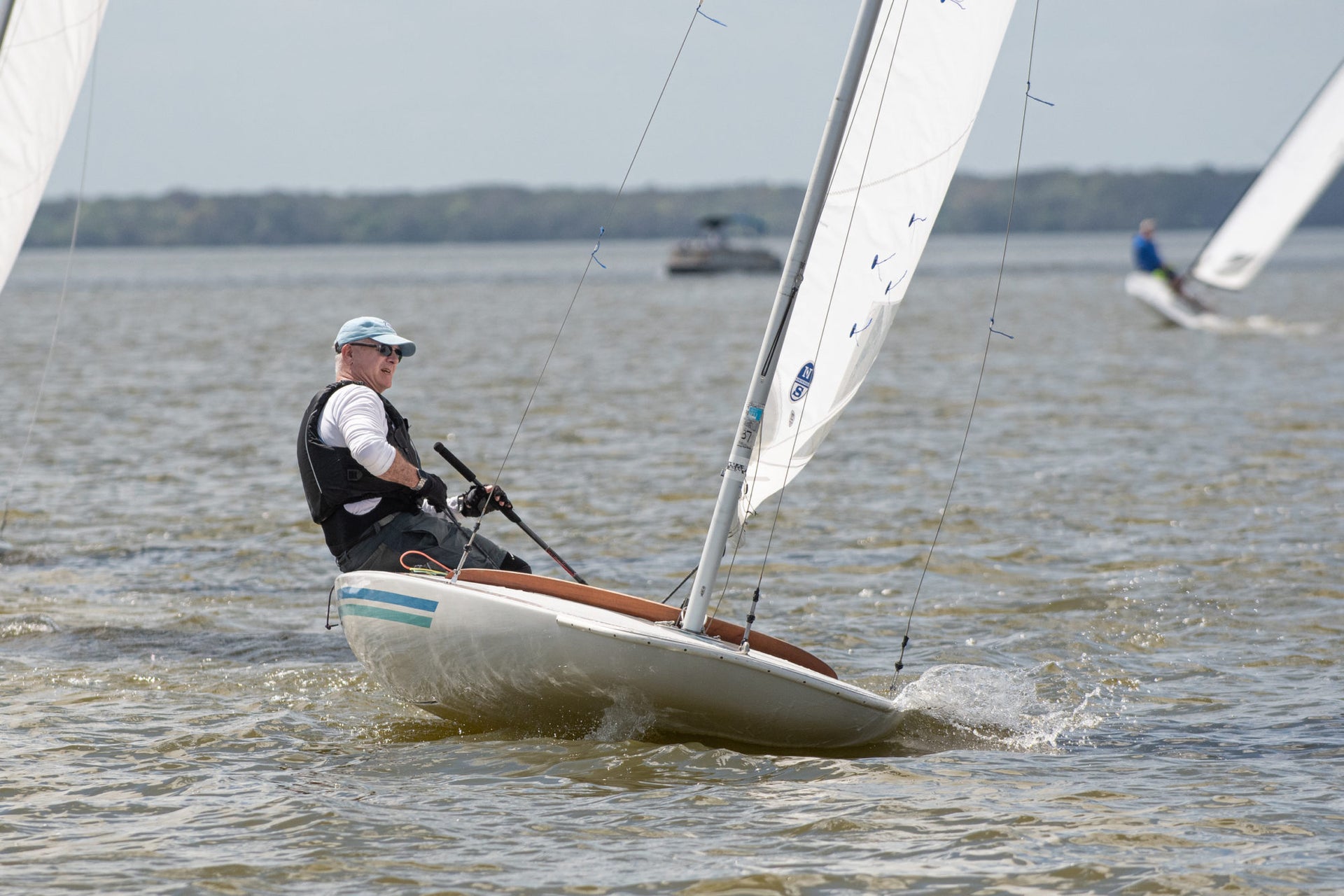
NEW MC SCOW MAGNUM WINS MIDWINTERS
NEW MC SCOW MAGNUM WINS MIDWINTERS
New Sail Designs Are Fast Out of the Bag in Florida
📸 Regatta Girl Photography
It’s a success! The new North Magnum design finishes 1,2 at the 2021 MC Scow Midwinters and the MC Rocket powered the winner at the Sarasota Bay Cup, the Pre-Midwinter event. The new MC designs were first launched in February at the Train Wreck Regatta in Eustis, FL. After countless hours of development, involving many members of the North Sails one-design team and sail designer Mike Marshall, results officially confirm that the new North designs are the best choice for MC Scow sailors.
Class expert Allan Terhune commented:
“The MC Magnum is a powerful sail. The results are here and we are very confident that the MC Magnum will be a huge success this summer. We made some significant changes to the MC Tuning Guide, including shroud tension and board angles, which are crucial for boat speed. Make sure to check it out! If you are planning to go to Nationals in Iowa, the MC Magnum is a MUST HAVE!”
Congratulations to James “Buzz” Reynolds for his consistency in both races at the event. Buzz was able to take his new sail right out of the bag and win the regatta.
Order your new Magnum today to get the speed and help you are looking for to be a step ahead at Nationals. We look forward to seeing you on the water at the Easterns and Nationals this year.
Sarasota Bay Cup (Pre-Midwinters) – Full Results
Midwinters – Full Results
SHOP MC SCOW
READ MORE
READ MORE
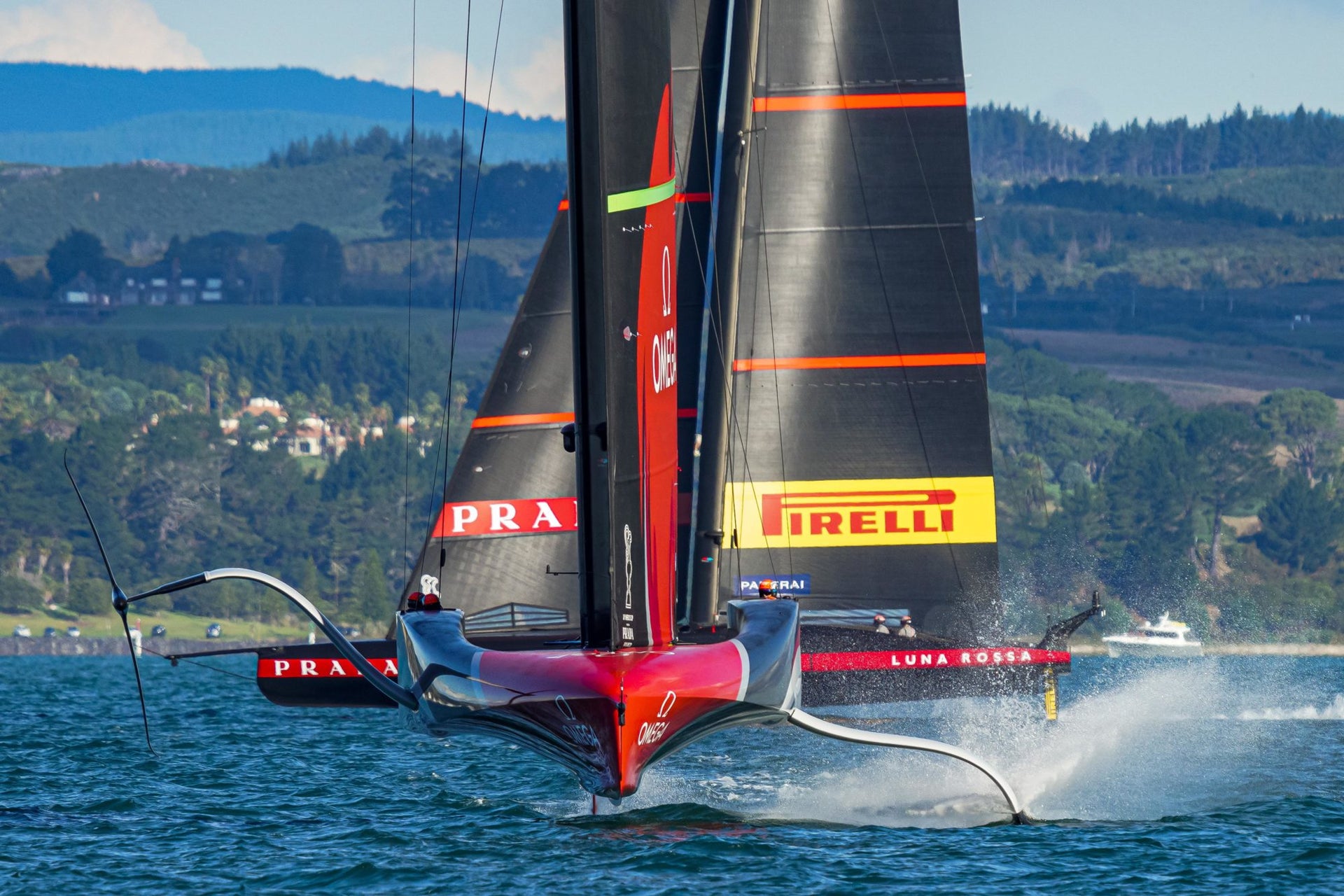
LIVE UPDATES: THE 36TH AMERICA'S CUP MATCH PRESENTED BY PRADA
LIVE UPDATES: THE 36th AMERICA’S CUP MATCH PRESENTED BY PRADA
On-The-Group Updates and Highlights from Auckland
📸 ACE / Studio Borlenghi
It’s been decided. Challenger Luna Rossa Prada Pirelli will meet Defender Emirates Team New Zealand to race for the oldest trophy in sporting history. The teams will sail 13 races, with the first team to seven wins claiming victory. This is an exciting time for North Sails as both competitors trust North Sails and our NTG family brands Southern Spars and Future Fibres to power their engine above deck. Our group has also supplied design talent and software to support the teams’ quest for the Cup. And for those of you who want to dress the part, North Sails is an official partner for event-branded clothing.
Racing begins March 10th at 1600 NZL time. Make sure to check your time zone if you’re watching remotely. North Sails will also be covering the Cup on this live blog and our social channels. Updates from Auckland below!
How to Watch
March 17, 2021, 1630 GMT
Kiwi victory over friends and rivals
On 17 March, New Zealand became the first country to have twice won and twice defended the America’s Cup. The final scoreboard against Luna Rossa Prada Pirelli was seven races to three, nailed in just seven crazy days that sat at three points-even after day three.
When the Defender, Emirates Team New Zealand, first lined up against Luna Rossa Prada Pirelli on 10 March, it was impossible to pick the stronger team. Three days later, the even points still refused to answer: Who has the fastest boat?
Both teams were titans of sailing talent; Spithill and Burling are the two youngest skippers to have won the America’s Cup. Their skills delivered some of the best racing in America’s Cup history, especially races 7, 8, and 9, and in AC75- boats that will change sailing forever.
Both teams arrived to the America’s Cup finals with different sets of skills: Italy was race-hardened but, like the rest of us, knew little about its opposition apart from rumors of speed. New Zealand had collected and run infinite bytes of data on Luna Rossa through its simulators but was race-rusty. And, ironically, Luna Rossa Prada Pirelli became the stone on which Emirates Team New Zealand sharpened its winning set of skills.
The final show played out on Course A in just over 10 knots of wind. Spithill wanted the right. He dove into the box and gybed slowly, hoping to lure Burling into a trap. Burling didn’t fall for it. He even took a slight loss to claim the windward hip of Luna Rossa Prada Pirelli at the start.
Before we could wonder if the Kiwis could live there, they tacked to claim the favored right-hand pressure from which they could bounce back with starboard rights. In match racing, this is gold. For the rest of the race, Burling handed the Italians the same tactics they had played so often in this America’s Cup: The Kiwis protected the right until they didn’t want it, then crossed tacks in a close flurry of foiling arms to take the left.
The first delta was just 7 seconds. Italy chased hard on the downwind leg; New Zealand gybed to stay in sync. At gate two, Emirates Team New Zealand’s gybe was a little untidy; Luna Rossa’s even more so, and the Italians kept both foils down too long for optimum speed. It was their last chance to regain the lead, and it didn’t just didn’t happen. From there, the Kiwis shut down the racecourse and sped downhill They won by 46 seconds and proved that Kiwis can fly.
America’s Cup 2021 was a clean battle on the water. And, at the end of it, the sailors genuinely appear to be friends. For viewers, it’s been like binge-watching an entire season of “Friends” in one sitting. Looking back, the weeks feel like one bike blur. So, to help, here’s our favorite moments from the last seven crazy days…
Race one was the one where, just after the start, Spithill attacked and just missed a penalty against New Zealand’s Te Rehutai: New Zealand’s point.
Race two was the one where Burling went for a hook in the prestart and missed. He followed Luna Rossa around the course and lost speed tacking into dirty air, but sprinted down the final run: Italy’s point.
Race 3 was the one where Italy did that impressive lee-bow tack, made it look easy, and dominated the rest of the race: Italy’s point.
Race 4 was the one where Italy would have liked another lee-bow tack but couldn’t live on Emirates Team New Zealand’s hip and tacked away. The Kiwis found a new mode and consolidated their lead when Luna Rossa Prada Pirelli did a bad tack at the top mark: New Zealand’s point.
Race 5 was the one where Emirates Team New Zealand sailed into a wall of air, parked and stopped in the prestart: Italy’s point.
Race 6 was the one where the story flipped, and Luna Rossa Prada Pirelli sailed into a wall of air and stopped in the prestart. The coincidence gave the world a lesson on boats that sail so fast they gybe back into their own wind shadow: New Zealand’s point.
Race 7 was the one where Italy’s jib was too big and proved to be more drag than drive: New Zealand’s point.
Race 8 was the one where the wind dropped and New Zealand was underpowered, gybed into Italy’s wind shadow and fell off its foils. Then, Italy fell off its foils. Everyone was on the edge of their seats. New Zealand recovered first: New Zealand’s point.
Race 9 was the one on Course C, where the lead swapped so many times our heads began to spin times and Italy defended most of the way around the course. But a lucky wind shift put the Kiwis back in the race: New Zealand’s point.
Race 10 was the one, as above, where both teams wanted the right but New Zealand got it. Game over, New Zealand’s victory.
In defeat, Luna Rossa was pure class. They congratulated Emirates Team New Zealand and felt good about their campaign.
Francesco Bruni: “We are sad not to win the Cup, but we lost it with honor; we lost it with dignity and we fight to the end.”
Congratulations to everyone in Emirates Team New Zealand– your victory was well deserved and we’re excited for what’s next.
March 16, 2021, 1300 GMT
Did that really happen? Yes it did.
The superyachts’ horns blared more loudly than usual as the AC75s left the dock in Auckland because the Auld Mug was on the table – if Emirates Team New Zealand won both races on day six, they would win America’s Cup 2021.
Going into the day, Emirates Team New Zealand had 5 points, and Luna Rossa Prada Pirelli had 3. There was a third character in the race though: the venue, Course C. Jimmy Spithill described the track as a tough race track that he knew promised some action. “It’s a dynamic course,” he said. “And things can change and happen very, very quickly.”
📸 ACE | Studio Borlenghi
Over the course of the ninth race, the lead shrank and stretched and swapped an almost infinite amount of times, but it meant nothing if Emirates Team New Zealand was unable to cross in front and take control, or if Luna Rossa Prada Pirelli couldn’t hold on. The race was loaded with a tough three years, including the bravery to start a new class. As the race unfolded, a sense of immense respect between the two teams began to shine bright. With everything on the line, the America’s Cup 2021 was delivering some serious fun.
Racing, it was clear the skippers’ nerves were as tight as carbon fibre– no one knew if the breeze would hold or flick around the compass. As the race unfolded, every tack and every gybe had to be just right. The result? Both teams were nailing every move perfectly; it was a true do or die moment.
📸 ACE | Studio Borlenghi
At gate one, the Italians were one second ahead of the Kiwis. Coming into mark two, Luna Rossa Prada Pirelli had starboard advantage and gybed on top of Emirates Team New Zealand. It was an aggressive move because it needed to be. (Being aggressive was quickly becoming the only clear way to win this race.),. Luna Rossa dumped exhaust on New Zealand’s sails and extended the lead around the mark.
On leg four, the Italians protected the left and the Kiwis split at the gate to sail the opposite side of the course. That led to New Zealand taking the right on the fifth leg, wide apart on the opposite side of Course C. Only from the helicopter could you see what was about to happen. Then the wind flicked right. And with it, the race changed and perhaps the destiny of the America’s Cup. The Kiwis sped home to win by 29 seconds.
📸 ACE | Studio Borlenghi
Even the wind decided that was enough excitement for one day. Race director Iain Murray postponed then abandoned race 10.
So, Jimmy Spithill, how does it feel to have Emirates Team New Zealand on match point? “I feel excited,” he said. “We live to fight another day.”
March 15, 2021, 1530 GMT
As close as it gets
Day 5 of the 36th America’s Cup may go down in history as one of the event’s most thrilling days on the water. The teams arrived at the start line with three wins each. Luna Rossa Prada Pirelli was armed with tools gathered through the Prada Cup: their high mode, their understanding of the AC75’s wind shadows and slick moves to execute match racing tactics at high speeds. Meanwhile, Emirates Team New Zealand is learning on the fly (although at a rapid pace), honing their skills, and uncovering their secrets weapons as the series unfolds.
When we sat down to watch race 7, we all knew it would all come down to the start– as it had for all the earlier races. However, if previous editions of the America’s Cup have taught us anything it is: never get comfortable with your predictions.
📸 ACE | Studio Borlenghi
In race 7, the Italians crossed the line with a click more speed and began to build their advantage, but pretty soon Emirates Team New Zealand took a nip at Jimmy’s heels. It was a luff that didn’t stick but also didn’t damage the Kiwis’ leg 1 strategy. Next, New Zealand began to engage in a tacking duel near the top mark, and as commentator Ken Read remarked, a match race broke out. Something big was brewing and the Kiwis were flexing their badass attitude.
Quickly, as the Kiwis gained more and more momentum, it appeared as Luna Rossa was caught off-guard. Compared with Emirates Team New Zealand’s, Luna Rossa’s headsail was bigger and, in the 10-plus knots, this was a drag, literally.
In leg three, the Kiwis picked a right hand shift. Their smaller, flatter jib was perfect, and they soon had a VMG of up to three knots faster.
Suddenly, the boats were neck and neck in the fight; both boats played tug of war as they headed towards the gate, with the advantage. But soon New Zealand pulled away in what was the first lead change of the 36th America’s Cup.
Emirates Team New Zealand won the race by 58 seconds and proved they can win the finish without winning the start.
But Jimmy Spithill knows how to bounce back. “You’re either winning or you’re learning,” he said. For race 8, the wind dropped to 7 knots; the Italians’ jib was back in its happy place and Emirates Team New Zealand was now caught with a jib too small.
The Italians seemed to be in control but, again, the Kiwis pulled out a new speed mode. On leg two, the Kiwis sped downhill on a promise to make the first downwind pass of the America’s Cup. They threw a gybe to take Luna Rossa to starboard – and five million Kiwis nearly stopped breathing: New Zealand was off the foils. They had hit the Italians’ jet-wash and a lull in the breeze. Emirates Team New Zealand limped back upwind to generate apparent wind, but their jib lacked the power to lift them up.
Meanwhile, on Luna Rossa Prada Pirelli everything was peachy. Their lead grew to 2300m and soon nearly 4 minutes separated the two boats. Then, on approach to gate three, the breeze went soft. As Francesco Bruni said later, “There was one tack that you couldn’t miss and we missed the wrong one.”
Italy was down, and just about every Italian heart sank with it
Although Italy eventually recovered flight mode, it was too late to stop the Kiwis as they finished 3:55 minutes ahead.
On day six, New Zealand could win the America’s Cup, but Bruno Troublé asked Jimmy Spithill if he could still win it.
“There’s no doubt in my mind, Bruno, absolutely no doubt in my mind.”
March 13, 2021, 1400 GMT
When AC75s trip up in their own shadow
Day 3 of the 36th America’s Cup was brutal. In race 5, a light breeze from the East blew across the Hauraki Gulf, Emirates Team New Zealand entered the pre-start of race five and did a hard turn looking assured and aggressive. Then, panic in flight controller’s Blair Tuke’s voice as he realized what was happening: the Kiwis hit a roadblock and couldn’t recover. Giving Luna Rossa Prada Pirelli a strong start and an easy path to victory.
Heading into race 6, the roles were reversed. Luna Rossa Prada Pirelli sailed confidently into a hard turn then, panic from Jimmy Spithill: “Come on, boys, we’ve got to get it going.” Luna Rossa, star of the starts, was dead in the water. And, this time, Emirates Team New Zealand sailed to an easy victory.
📸 © ACE | Studio Borlenghi
By the end of the day, we were exactly where we started with both teams tied 3 to 3. Unlike previous America’s Cups, we are no closer to knowing who will lift the Auld Mug than we were however, we do have a new question to mull over, as Nathan Outteridge pointed out, will event come down to being won, not by the fastest boat but, simply, the best sailor(s)?
But Day 3’s strange coincidence revealed another AC75 phenomenon: the boats can trip over their own shadow.
“The wind shadow is so much more than we’ve experienced before,” Spithill said later. “I think in the lighter air, you go through your own wind shadow because you’re coming through from above. Both teams found themselves trapped in a bubble and it’s very difficult to get out of it.”
Spithill is explaining how when both AC75s sailed deep into the start box, they created a disturbance in the air which drifted downwind at 10 knots. The AC75, sailing at 35 knots, gybed and turned back towards the line just in time to meet the air they had just disturbed. On a slower boat, the disturbed air would have passed in front, but the AC75 is fast enough to catch it.
Meanwhile, in the closest America’s Cup in decades, Emirates Team New Zealand continues to hone their skills against the Italians. Although Luna Rossa Prada Pirelli led by around 200m for most of race 5, the Kiwis held the gap and found new strength in light airs, even as the Italians dumped dirty air over their shoulder.
When the roles were reversed in race 6, the Kiwis’ lead over the Italians extended significantly and the rich got richer. “We showed what we could do when we’re ahead,” said Burling.
Despite not being any closer to knowing the result after six races, Spithill is loving every minute. “It’s just such a fascinating time,” he said, “because it’s a completely new style of boat and we are dealing with the defender who’s the best in the world. You could have a day off after every race just to get through all the data.
“Let’s hope this America’s Cup goes down as one of the best fights on the water.”
March 12 2021, 1400 GMT
Who has the fastest boat?
America’s Cup number 36 continued to play coy as we clamoured for answers to questions that day one had failed to answer: Who has the fastest boat? Is Emirates Team New Zealand sticky in the light? Does foil size matter? And day two has only confused things, like a Whodunnit that feeds out clues then disproves every theory.
Initially, race three seemed straightforward. The wind was under 10 knots which, according to the evidence presented, would favor Luna Rossa Prada Pirelli. The Kiwis crossed the line with Luna Rossa Prada Pirelli in its dangerous, high mode on the Kiwis’ windward hip. When Emirates Team New Zealand tacked at the boundary, Luna Rossa was ready. It performed a superb lee bow tack.
📸 ACE | Studio Borlenghi
It’s a move that looks easy when it works, but the boats’ relative positions have to be right. The Italians nailed it. In light breeze, the lead boat’s wind shadow has an even worse impact than on windy days and it was costly. The Kiwis were forced to eat their dust.
For the rest of race 3, Luna Rossa Prada Pirelli played their strengths: better speed upwind and bigger foils that served them well in a tacking duel in leg three. Since boats on an America’s Cup course spend more time sailing upwind than downwind, Luna Rossa banked precious metres that far outclassed the Kiwis’ edge downwind. By the final delta of 37 seconds, New Zealand had sailed nearly 1.5km further than Italy.
Race four: The breeze had dropped as Kiwi supporters braced for a repeat performance. Once again, our heroes sailed towards the left-hand boundary with the Italians on the Kiwis’ hip, ready to pounce. But then the Italians tacked away, unable to live there. This was new. The Kiwis had found their light-wind mode.
READ MORE
READ MORE
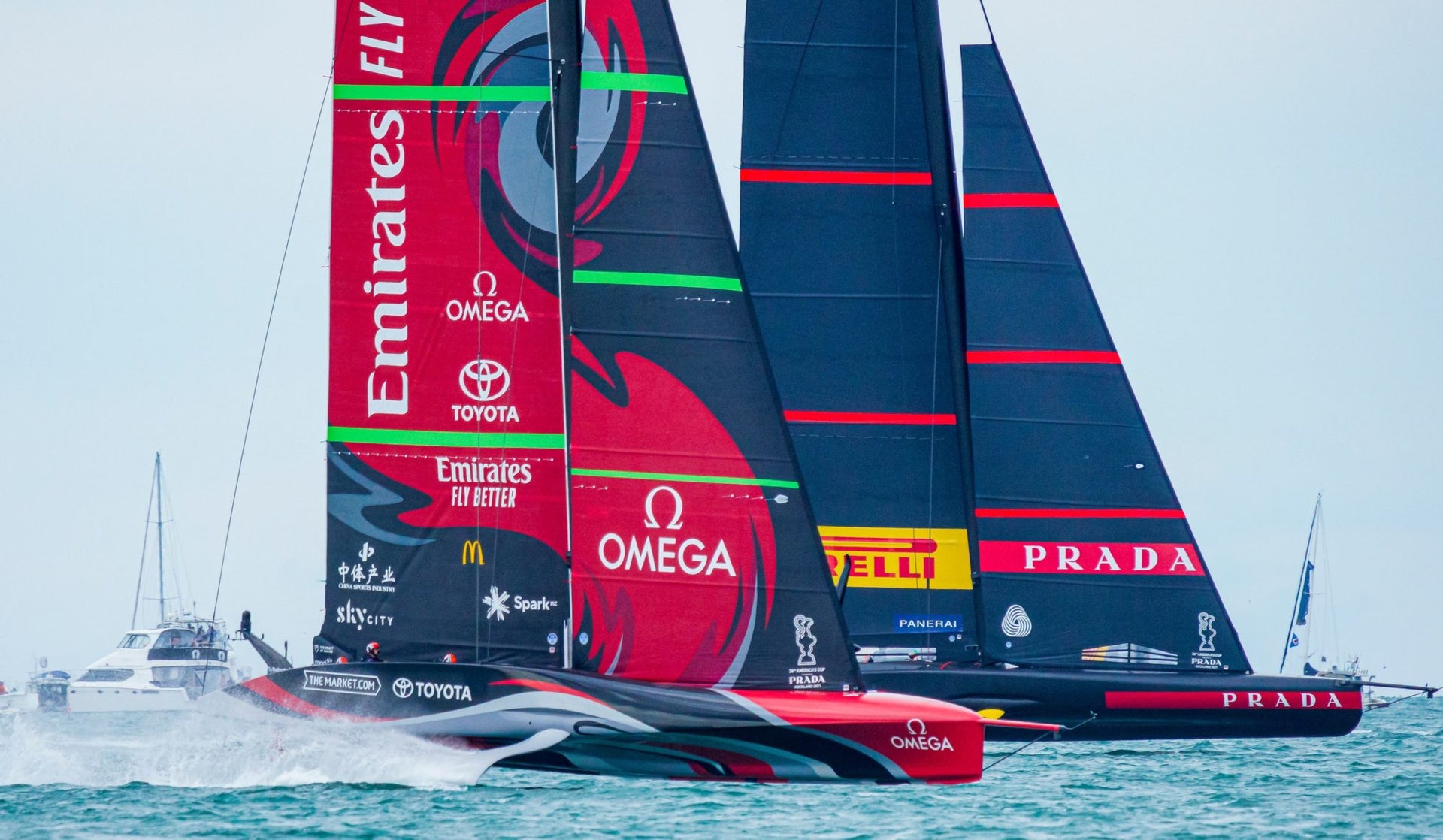
BEHIND THE SCENES: BONUS PODCAST
BEHIND THE SCENES: BONUS PODCAST
Ken Read, Burns Fallow, Juan Garay, and Marco Capitani Sit Down in Auckland
Sail designer for the Defender, Burns Fallow and the Challenger dynamic duo of Juan Garay and Marco Capitani join North Sails President Ken Read for an insider’s-update on the 36th America’s Cup Match. The podcast is jam-packed with information and insights from the people closest to projects, our North embedded designers.
NorthSails · Special Edition Podcast: America’s Cup Behind the Scenes
READ MORE
READ MORE
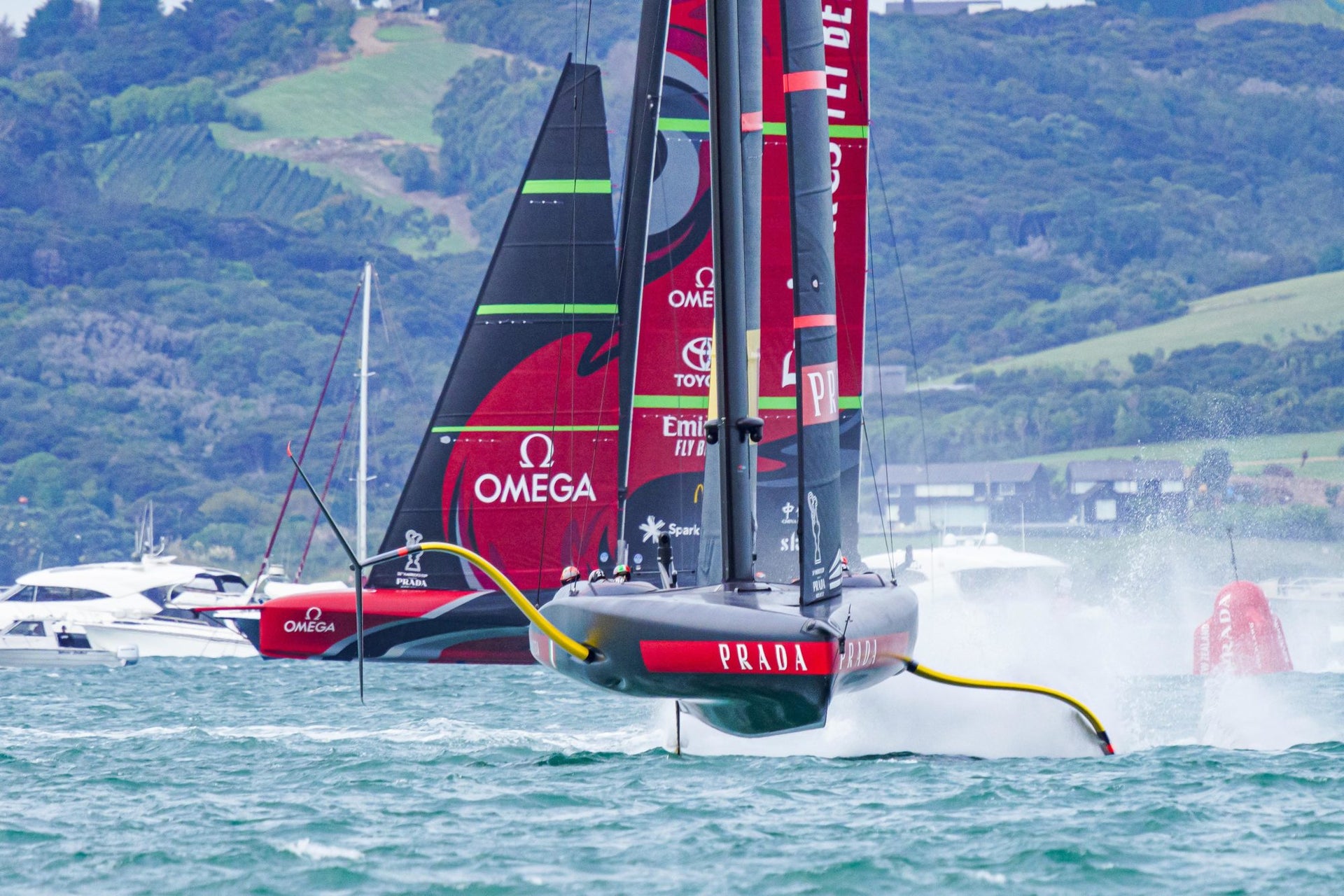
LET'S TALK ABOUT SAILS: AMERICA'S CUP MATCH DAY 1
LET’S TALK ABOUT SAILS: 36TH AMERICA’S CUP MATCH RACES 1 & 2
Two design philosophies, two sail trimming strategies
North Sails and INEOS TEAM UK sail designer Gautier Sergent indulges us once again with his take on the 36th America’s Cup opening races, and the crucial role played by the AC75 sails on that global stage.
He’s prudent – the racing has just started and he knows first-hand the road ahead can be long. “The first day of the Prada Cup between INEOS TEAM UK and Luna Rossa Prada Pirelli was a bit similar, and we know how that ended. Let’s see what happens next.
“But it’s not night and day between the teams, that’s for sure.”
What’s interesting, Sergent notes, was to see each of the teams’ philosophy shine so bright on Wednesday in Auckland. There was no big surprise, no “rabbit pulled out of a hat,” as he puts it. But if their speeds on the water were relatively similar, their design differences showed clearly.
“We’ve seen signs of what was coming during training and as the racing started, each team stuck to their plan.
“On Luna Rossa Prada Pirelli, we’ve noticed that their mainsail was slightly twisted and their mast less bent. In fact, the tension in their vertical rigging seemed quite low. Going upwind, you could see their leeward shroud move. We’ve all seen it before, but we’re not sure whether it comes from structural constraints or something else.
“We’ve also noticed a kink in the forestay at the head of the jib, which means the forestay isn’t under a lot of tension. I think it’s a result of their no-runner philosophy. They have to have runners onboard because of the class rules, but their original concept didn’t include them.”
What does that all mean on the water, then? “They probably use a lot of cunningham tension on the headsails, using the Helix Structured Luff. The two-to-one halyard is another clue supporting this assumption. The Kiwis have a conventional 1:1 jib halyard. That is not to say they are not using some smart sail structure but they would have been working on a different concept.”
He’s observed a difference in behavior on deck, too.
“It looked to me like the Kiwis were a lot more active trimming the jib track – in particular downwind. It’s hard to spot on TV, but that would illustrate their philosophy. They’ve got Glenn Ashby onboard as a dedicated trimmer, while the Italians have separate mainsail and jib trimmers. Sure, they must be communicating all the time, but onboard the Kiwi boat, it seems that it is all coordinated by Ashby. He’s trimming the mainsail, and we’re not quite sure but it’s possible he might be trimming the jib too through some control points.
“But just like Luna Rossa’s two-helmsmen approach, it’s a decision based on the actual skills of the people involved. We know Ashby is originally a sailmaker, he’s dedicated to sails so it’s natural for him to do that on Te Rehutai.”
There is no better or worse, at least for now. Just different design choices that have influenced the sail shapes, structures, and trimming tactics.
“Both teams had the same sail area up so their crossovers must be very close,” adds Sergent. “The boats look really different visually but must have relatively similar performances and aerodynamic needs.”
That, however, won’t last forever. It might be one-all for now, and these different approaches might have delivered similar results so far because of the wind conditions on day one. Going into the weekend, the wind gets considerably lighter (it’s forecasted to be 6 knots max). When we see extremes like this, we are more likely to see more differences between the teams– and we’re more likely to see them reveal their secret weapons. But if there is one thing that’s for certain in the America’s Cup, it’s that in the end, the winner takes it home.
READ MORE
READ MORE
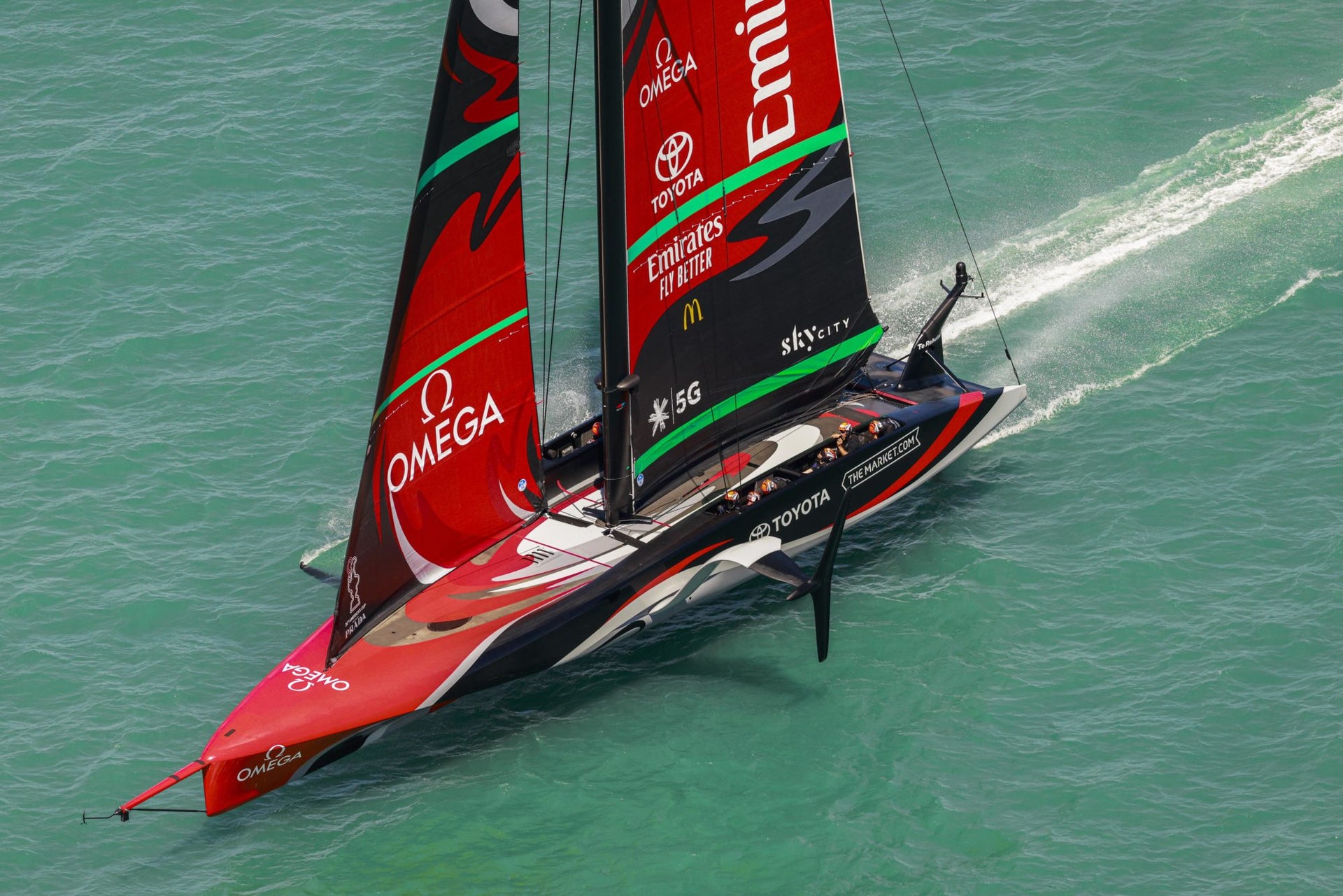
WHAT YOU GOT THERE EMIRATES TEAM NEW ZEALAND?
WHAT YOU GOT THERE EMIRATES TEAM NEW ZEALAND?
Are these sails secret weapons – or are the Kiwis playing mind games?
📸 COR 36 / Studio Borlenghi
Over the past couple of months, Gautier Sergent has had plenty of time to observe and analyze Te Rehutai’s sails.
One of North Sails leading designers, Sergent was embedded with INEOS TEAM UK in the 36th America’s Cup and has been in Auckland, New Zealand since August. With all eyes on the America’s Cup races later this week, he’s been paying extra attention to the Kiwis’ AC75.
Truth is, there is no knowing what’s happening behind their Viaduct Harbour base’s doors, but here are a couple of Sergent’s connoisseur comments ahead of the racing.
Is THAT a Code Zero or Whomper Sail?
“We’ve seen them use a very light Code Zero on the bowsprit. The clew point is quite high, and the sail looks like it’s been designed for very, very light conditions. We don’t know for sure, but looking at the material and its geometry, we suspect that this sail is not designed to foil.
“So we think it’s a sail they could use when the boat needs to get to the next patch of pressure quicker and then up on the foil before the other team. It could also help in pre-start or finishing phases. The races have a time limit (of 45 minutes), so if they’re leading but the racing is dragging on, this sail could help them cross the line on time and win a point.”
Remember race one of the Christmas Cup when Emirates Team New Zealand raced against INEOS TEAM UK? The conditions were so light that the race eventually timed out, however, the race could have easily been awarded to a team with a Code Zero- like sail. “It was OK for the Christmas Cup, but you cannot afford to give away points in an America’s Cup match,” Sergent said.
March in Auckland usually brings changeable weather and weaker thermal winds, making the racing conditions reliant on the gradient winds. If there is no gradient, there won’t be wind at all – and with the racing allowed to start at 6.5 knots only, a sail designed for very light conditions might come in handy.
“Remember,” adds Sergent, “it’s also part of the game to show only what you want to show! They might have designed and tested this sail only to decide it didn’t work – but are choosing to show it to get everyone else thinking. Imagine you’ve spent time working on something that’s not performing – you’d want the other teams to waste that time too.
“We’ve yet to see a Code Zero racing in this America’s Cup. It’s such a specific sail that some of the teams have even decided to design bowsprits that can’t carry that sail load. But since Emirates Team New Zealand have tried this specific Code Zero so late in the game, we doubt it’s a mind game.
“What’s funny is that we might never know. If there is no light day, they won’t use it and we’ll keep asking ourselves, was it real… or was it all a mind game?”
To Batwing or not
A couple of weeks ago, the Kiwis were seen trialing a Batwing – a very small mainsail that was first tested by American Magic.
“The rules don’t take potential leech hollows between the girths into account when calculating the sail area,” explains Sergent. “You can actually design a mainsail that’s smaller than the 135 sqm allowed by the class rules by using this bat-like design. These boats are quickly overpowered and you can’t take a reef in, so this Batwing could let you reduce the drag in heavy winds.
“But so far, we’ve only seen the Kiwis try this concept, with an old sail they’ve recut, we haven’t seen them use a new one designed specifically for this. It might just be a way to distract Luna Rossa Prada Pirelli.”
Main course
One more thing caught Sergent’s attention – the mainsail settings onboard Emirates Team New Zealand.
“We can add all sorts of control systems in the top four meters of the mainsail: ropes, boat hooks, everything that makes it possible to control that shape. But we haven’t noticed much of that whenever we looked at the New Zealand team preparing and hoisting their mainsail.
“Plus every other team hoist their mainsail pre-assembled, with both skins already tied together, but the Kiwis bring both skins in different bags and only connect them once the heads are partially hoisted.”
📸 COR 36 / Studio Borlenghi
So, what would that mean performance-wise? Sergent pauses before saying, “It means they don’t have this very sophisticated system to take care of which saves weight which can be used elsewhere and they could potentially change mainsails faster between races.
“We’ve also noticed they can bend their mast significantly more than everyone else, even though the masts are one-design. We’re assuming they’re using their cunningham to do that with a specific sail structure to suit, but we’re not quite sure.
All of that could explain why Emirates Team New Zealand tend to show flatter sails up range and tighter leech settings while Luna Rossa Prada Pirelli usually sail with torqued sail trimmings.
The Kiwis have also lowered the deck by raising the mast base to keep it rule compliant, adding “free” area at the bottom of their mainsail.
These, and a thousand other design decisions, will all come to fruition on Wednesday in Auckland as the New Zealand and the Italian teams face each other in the first race of the 36th America’s Cup.
📸 COR 36 / Studio Borlenghi
READ MORE
READ MORE
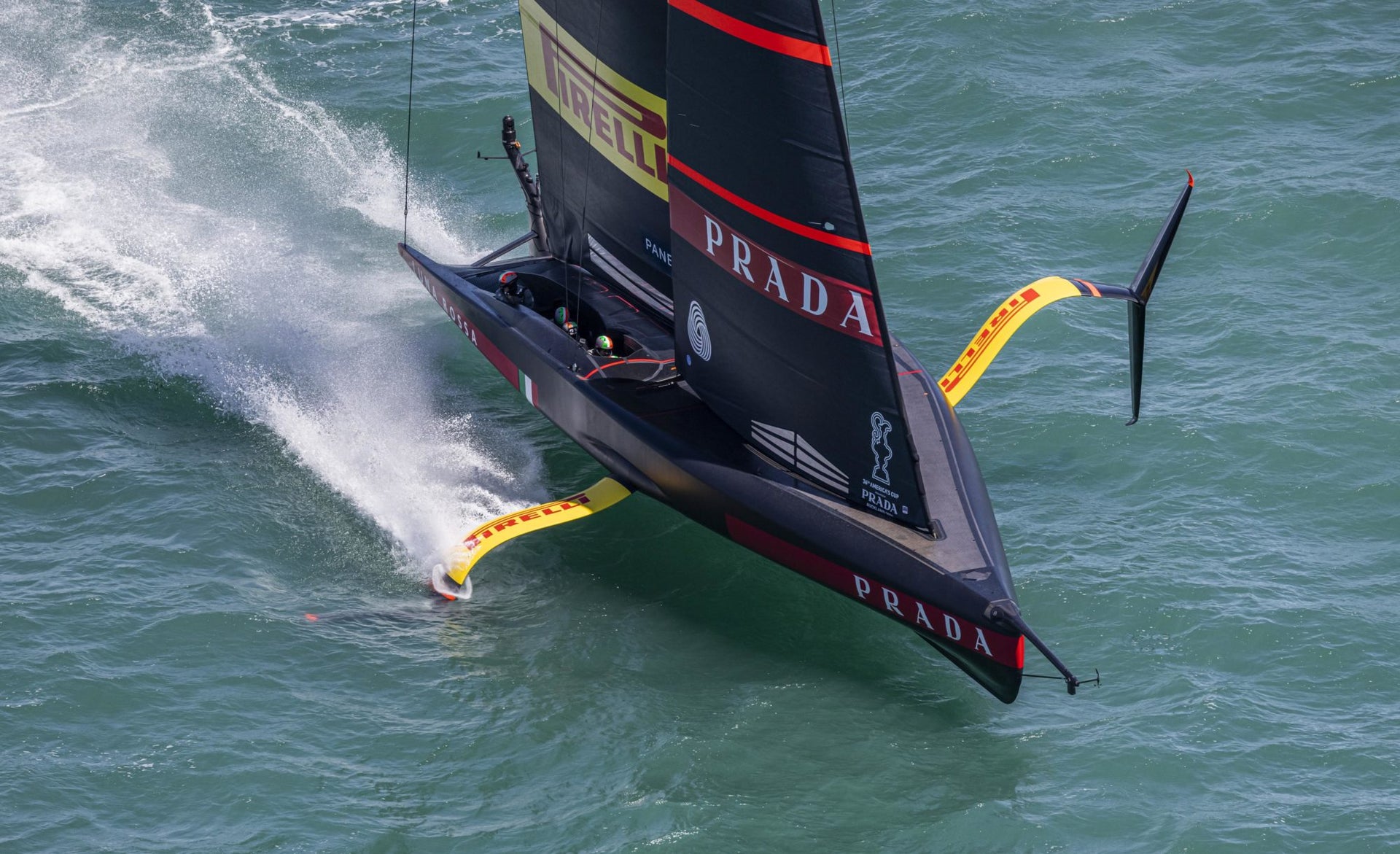
BEHIND THE SCENES: EPISODE 3
GO BEHIND THE SCENES WITH LUNA ROSSA PRADA PIRELLI SAIL DESIGNERS
Episode 3: North Sails x the 36th America’s Cup
“For a sail designer, being involved with the America’s Cup is a dream come true,” said Marco Capitani, one of Luna Rossa Prada Pirelli’s sail designers. With Luna Rossa Prada Pirelli, the sail design is looked after by Capitani and his fellow North designer Juan Garay. Each designer brings their unique perspective and expertise to the project, Garay devising the concepts and Capitani keeping a hawk-eye watch over the performance details. This really allowed both designers to share a lot of innovative ideas in the America’s Cup—an event they both agree is intense, demanding, and a dream come true.
READ MORE
READ MORE
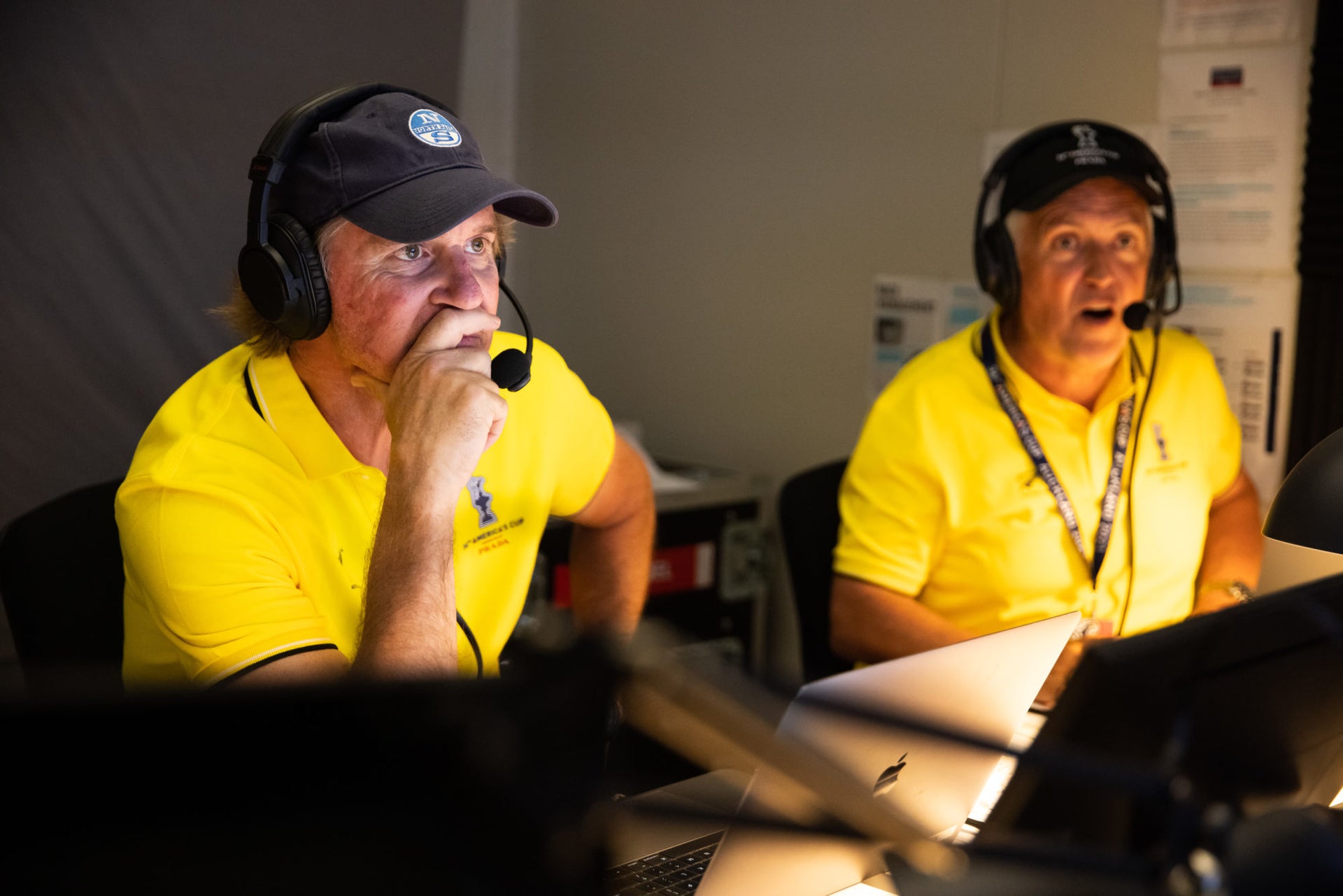
BEHIND THE SCENES: EPISODE 1
GO BEHIND THE SCENES WITH TV COMMENTATOR KEN READ
Episode 1: North Sails x the 36th America’s Cup
Ken Read, President of North Sails and Executive VP of North Sails Technology Group, is not sailing in the 36th America’s Cup, but he’s doing his best to make sure you enjoy (and understand) it. As one of the four TV commentators, Read is bringing to life all the action as it unfolds on the Hauraki Gulf in Auckland, New Zealand. He is also wearing his North Sails hat, and he is fully aware that the partnership between North Sails and the America’s Cup is putting the industry leader on the fast-track for sailmaking evolution and innovation. “We couldn’t do it without the America’s Cup,” Read said. “For North Sails, the America’s Cup is a fast-track design evolution. We’re constantly climbing the ladder for product development for our company. I know how much these teams are counting on us. We need to deliver better than what they expect because that’s what we do.
READ MORE
READ MORE
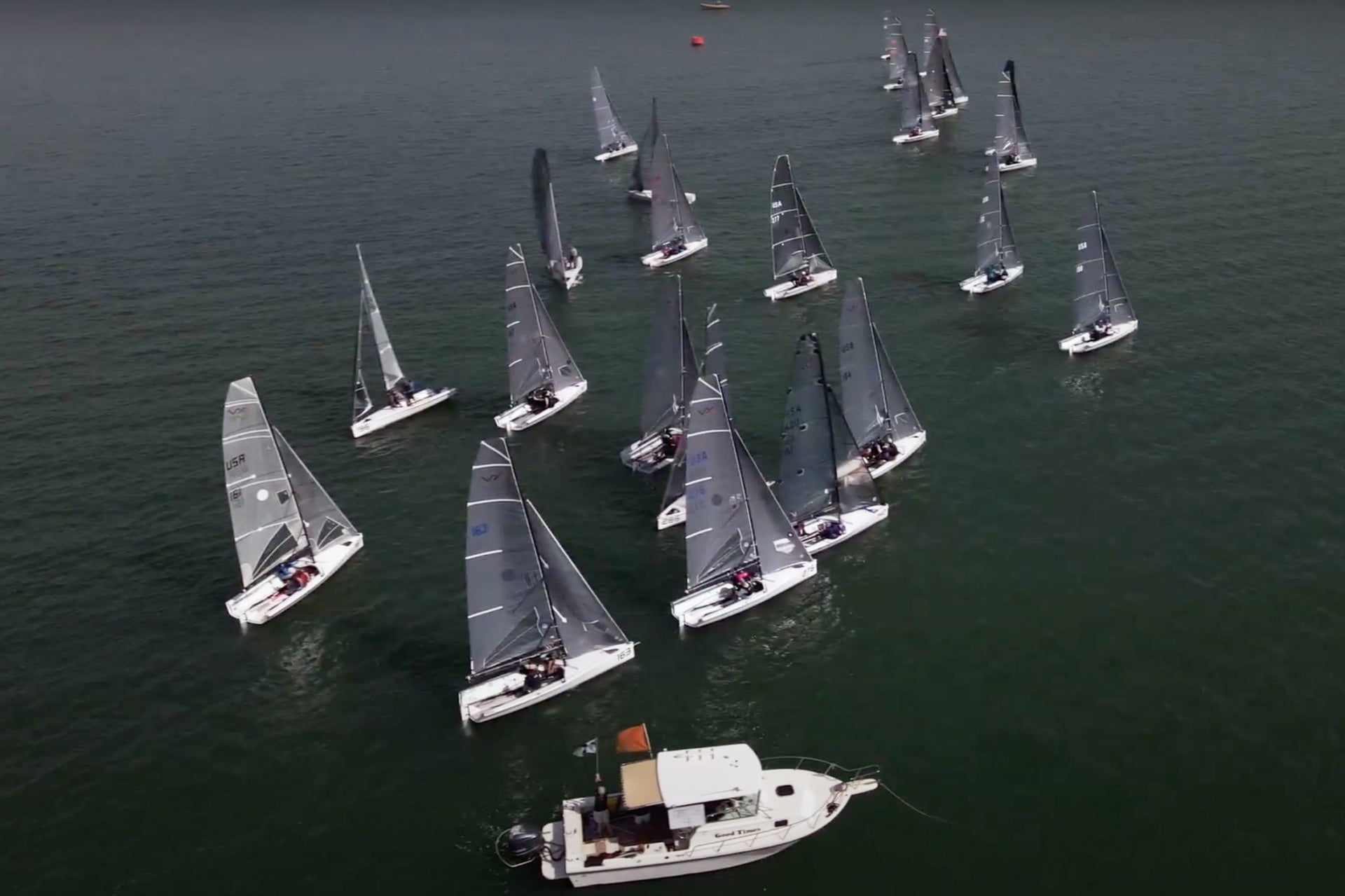
CONTINUED SUCCESS AT THE VX ONE WINTER SERIES EVENT #2
CONTINUED SUCCESS AT THE VX ONE WINTER SERIES EVENT #2
North Customers Sweep the Podium Once Again
📸 Roy Ingham
Sarasota Sailing Squadron welcomed the VX One fleet for their second winter series event over Valentine’s Day weekend. Following the successful Midwinter Championship in January, the fleet grew slightly to 24 boats. By Friday afternoon, most teams were onsite prepping, practicing, and sitting in on Chris Alexander’s rules discussion focused on mark room at leeward gates and downwind finishes.
Early morning fog on Saturday cleared before start time and the race committee was able to get four races off. The southwesterly breeze built from 5 to 10 knots and generally trended left, but not without some irregular righties rolling through. Teams who stayed focused on maintaining adequate power and balance onboard while also staying in phase were generously rewarded. One of the day’s biggest takeaways, however, was that the top teams are not the ones who only seek perfection, but the ones who adapt the most efficiently when mistakes are inevitably made. With no team winning more than one race on Saturday, it’s clear that resilience and forward-thinking were common traits amongst the leaders.
Sunday’s forecast was much less stable, with dark clouds looming on the horizon. A squall hit the fleet with heavy rain on the way out to the course but gave way to overcast skies by the time racing started. The 15 knots southerly steadily built to 25 knots over the course of two races. Sunday’s top teams were the ones who not only depowered the sail plan and hiked hard but also trimmed the sails to minimize heel angle and leeway. Many teams hit personal best downwind speeds, but the race committee made the decision to send the fleet in after seeing a few too many keels in the air.
Winning the weekend was Doug Clark with Mike Marshall. Second place went to Jim Ward with past class president Jeff Eiber and Lynda Bryant onboard. Rounding out the podium was current class president Chris Alexander sailing with Madeline Gill and Kate O’Donnell.
Teams powered by North Sails finished 1, 2, 3, 4, 5, 6, 8, 9.
The final event of the winter series will have a more extended format, with three days of racing on March 19-21. North experts Austin Powers and Madeline Gill will host a debrief after practice on Thursday. Keep your eyes out for more information as we get closer to the event.
SHOP VX ONE SAILS
📸 Roy Ingham
READ MORE
READ MORE
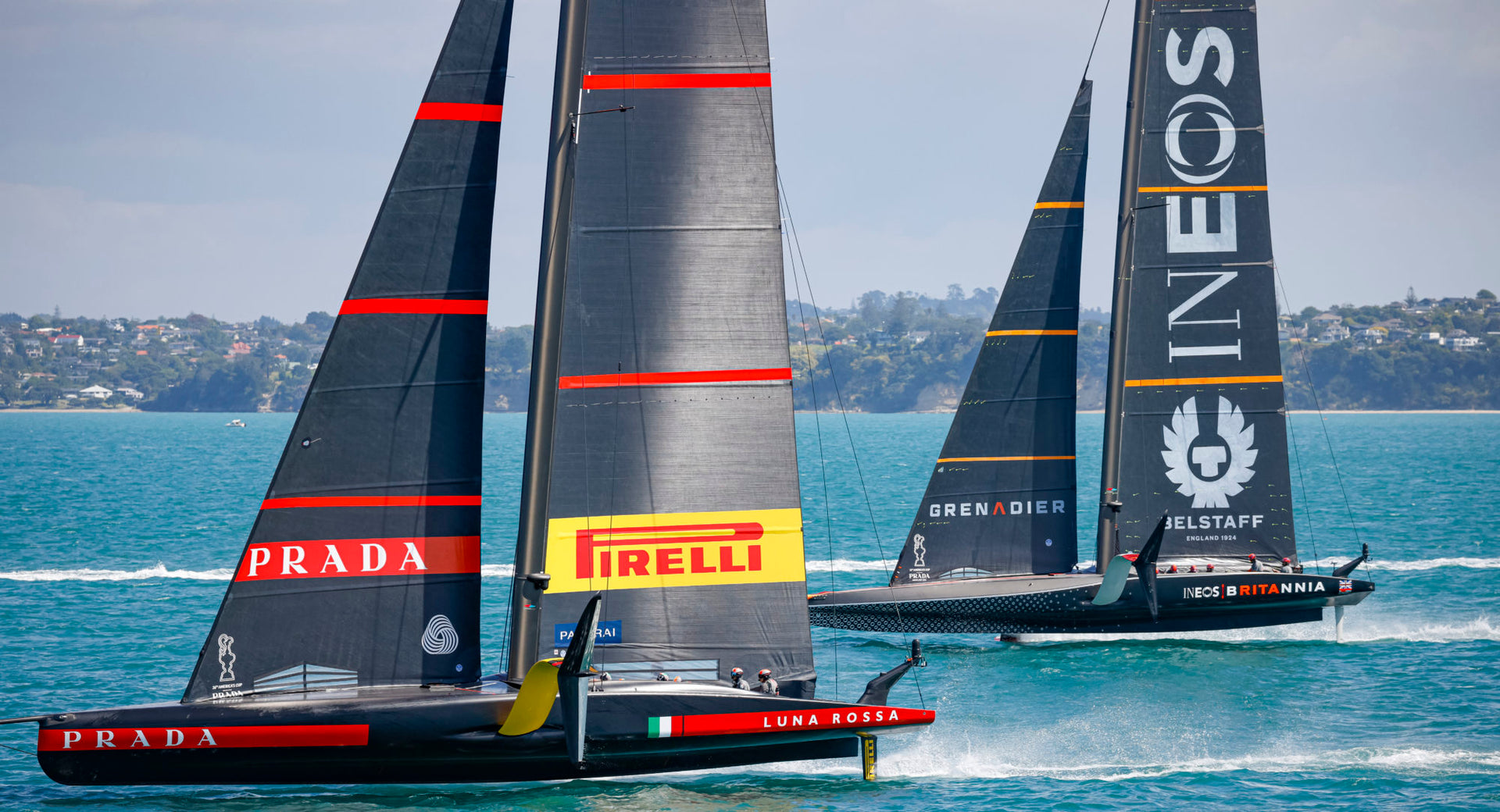
LIVE UPDATES: THE PRADA CUP FINALS
LIVE UPDATES: THE PRADA CUP FINALS
On-The-Ground Updates and Highlights from Auckland
📸 COR 36 / Studio Borlenghi
Two team racing for one seat in the America’s Cup match. INEOS TEAM UK and Luna Rossa Prada Pirelli will sail 13 races, with the first team to win seven declared the winner of the PRADA Cup. This is an exciting time for North Sails as both competitors, and Defender Emirates Team New Zealand North Sails, and our NTG family brands Southern Spars, and Future Fibres to power their engine above deck. Our group has also supplied design talent and software to support the teams’ quest for the Cup. And for those of you who want to dress the part, North Sails is an official partner for event branded clothing.
Racing begins January 13th at 1600 NZL time. Make sure to check your time zone if you’re watching remotely. North Sails will also be covering the PRADA Cup on this live blog and on our social channels throughout the next few weeks.
How To Watch
February 20, 2021, 14:00 GMT
Not going down without a fight
“We’re going into the thick of the fight,” Sir Ben Ainslie said before he led his men into Race 5 and 6 of the PRADA Cup Finals. Following the Covid-19 alert in New Zealand that postponed two days of racing, Ainslie and the British team was four races down to Luna Rossa Prada Pirelli in a best of thirteen event.
The time gave INEOS TEAM UK five consecutive days to hunt for the speed and agility they needed to extend their invitation beyond this weekend. With no boat modifications permitted, they looked at the human factor and went to light airs sailing school. After all, the day was a bit of a do-or-die race for the British team if they wanted to stop the Italians from steamrolling them straight to the America’s Cup.
📸 COR 36 / Studio Borlenghi
“Some of these racing techniques, particularly through the maneuvers, are very subtle,” said Ainslie. “There is so much that goes into a single maneuver, from the sequencing of changing the load between the boards, the main and jib transfers, and more.”
Then they went back to the game film to study their opponent. “The more the teams race,” Ainslie added, “the better we are at figuring each other’s play in the pre-starts.”
Race 5 would reveal the Italians were likely doing the same.
The day started with a show of strength. In the shifting south-wester of 8 to 11 knots, INEOS TEAM UK brought out their biggest jib to help launch the boat in the light airs. Luna Rossa Prada Pirelli hoisted a smaller jib, because their boat lifts onto the foils easier, and any unwanted sail power becomes drag as soon as their AC75 is foiling.
Then came the start. Both boats wanted the right side of the line, but Jimmy Spithill edged up to shut the door on INEOS TEAM UK at the mark, leaving Ainslie with a choice: barge for the line or bail out into oblivion. He barged.
📸 COR 36 / Studio Borlenghi
At the last second, Spithill pulled out his new trick. He brought Luna Rossa into a high, slow mode beneath Britannia.
Wait a second – was that a luff? AC75s don’t luff…do they?
Both boats survived unscathed, except INEOS TEAM UK emerged with two penalties, and by the time that was cleared, Luna Rossa was ahead. Somehow, everyone missed what had just not-happened. The lead INEOS TEAM UK had for the first half of leg one quickly disappeared. Then Prada won the race.
For race 6, everyone expected a repeat performance.
Both boats were headed for the start line, with INEOS TEAM UK to leeward and ahead when Spithill pulled out his next new trick (the luffing one). He dived down to make big swoops behind TEAM UK to make them squirm and burn off speed, but the Brits didn’t fall for it. Nor were they seemingly phased by it. In fact, Spithill burned off his speed and crossed the line late.
This was suddenly a very interesting race
Ben Ainslie took full control of the race and threw in some lee-bow tacks and led at every mark. Upwind, INEOS TEAM UK’s big jib was slower through the tacks while Prada Pirelli flexed their new, higher angles. Downwind, INEOS TEAM UK sailed deeper and exited the gybes lower to regain lost ground and extend the distance. Both boats sailed flawlessly around the course.
Ainslie and tactician Giles Scott played to their strengths, largely avoided duels, and saved their grinders’ energy for a final gybe to stay between Luna Rossa and the finish. The Brits crossed 14 seconds ahead to take their first win of the Prada Cup Finals.
And so, the Brits lived to tell the tale another day.
On Day 3, INEOS found their fight. Expect Spithill and Bruni to come back swinging tomorrow.
COR 36 / Studio Borlenghi
January 14, 2021, 2100 GMT
Winning streaks and losing streaks
In the PRADA Cup Round Robins, INEOS TEAM UK sometimes followed the match racing handbook and sometimes closed the book and played the wind shifts. They then won every race, in a remarkable turn of events where the team turned their 100% losing streak from the America’s Cup World Series into a 100% winning streak.
Now, in the PRADA Cup Finals, the team finds themselves in the familiar, but precarious territory – 4 races down to Luna Rossa Prada Pirelli. The positive: they’ve come back before. The negative: the Italians are on a roll and will do everything possible to ensure the Brits’ comeback story was a one-time thing.
📸 Graeme Murray
INEOS TEAM UK clocked their third and fourth losses on day two of the PRADA Cup Finals on a new venue: Course E, aka the Back Paddock. It’s surrounded by islands and, in the brisk northeasterly, it delivered shifty, gusty winds. The day promised a brawl: two evenly matched boats, lots of passing lanes, and three helmsmen highly skilled at match racing.
In race three, Ainslie entered the start box determined to get a hook on Luna Rossa Prada Pirelli, but admittedly got a bit greedy and ended up below the layline. From there, Luna Rossa ruled the race course. Sometimes they tacked on INEOS TEAM UK in classic match racing 101; sometimes they played to their leader’s privilege to pick wind shifts.
For the trailing Britannia, every tack was an opportunity to make a gain (and they did at times). When the boats did engage in tacking duels, INEOS TEAM UK generally tacked wider, losing a precious few meters every time. And although the Italians misjudged some gybes, INEOS TEAM UK never came within striking distance to pass. The final delta was just 13 seconds – roughly the cost of the error in the start box.
📸 Graeme Murray
For race four, INEOS TEAM UK wanted to make trouble, but a start-box maneuver went wrong and Britannia reared high evoking flashbacks from the now infamous American capsize. The mainsail swept across the deck, depowering just in time to prevent a capsize, but, once again, Luna Rossa was a force to be reckoned with. Again, INEOS TEAM UK tried to rewrite the script, but they could not force an error on Luna Rossa. The final delta was 41 seconds, but Spithill emphasized that the score-line doesn’t reflect the close racing. “You’re constantly just a split-second way from any mistake,” he said.
Ainslie knows there is still hope. “We have to go away and regroup and come back swinging,” he said.
Jaunaury, 13, 2021, 1330 GMT
It’s game on in the PRADA Cup Finals
As day one of the PRADA Cup finals, yesterday was a Very Important Day. Three weeks ago, INEOS TEAM UK won four in a row over Luna Rossa Prada Pirelli – but in America’s Cup terms, three weeks ago is like last year’s winter fashion. Yesterday, upon returning to the water, both teams would strut their new improvements on opening day of the penultimate series.
Going into the day, Luna Rossa Prada Pirelli promised new foils, a modified mast, fresh sails, improved software, and communications. INEOS TEAM UK said they had found more speed and promised they were race-ready.
📸 COR 36 / Studio Borlenghi
Race one opened in sunshine and a light breeze, and if you’re an AC75 named Britannia, that’s not the forecast you would order. INEOS TEAM UK fell off the foils in the prestart and was unable to catch up. Talk about an anti-climax.
Race two brought a perfect, steady breeze of 12 knots. The start was flawless. Luna Rossa Prada Pirelli was to windward and tacked away. Both boats bounced off their respective boundaries and came back for the all-important first cross. Luna Rossa had it, easily, and commanded the lead for the remainder of the race. The Italians finished the day two-up on the Brits.
Well, we didn’t expect that.
Neither, it was clear, did Ben Ainslie. Immediately post-race, he appeared rattled but gained composure for the press conference an hour later. “I think it will come down to who sails the best and that’s absolutely how it should be,” he said.
We agree.
In race one, Luna Rossa Prada Pirelli carried more depth in her mainsail than INEOS TEAM UK, which may have provided a power-boost to get her up onto the foils faster. For the second race, both boats switched to smaller headsails. Luna Rossa went with a fat-head jib, and INEOS TEAM UK, a peaked jib; both teams admitted they could have benefitted from smaller jibs as the wind developed through the race.
Our predictions going into day two? Well, expect to see INEOS TEAM UK sailors doing a wind dance overnight for a forecast suited to their liking.
READ MORE
READ MORE
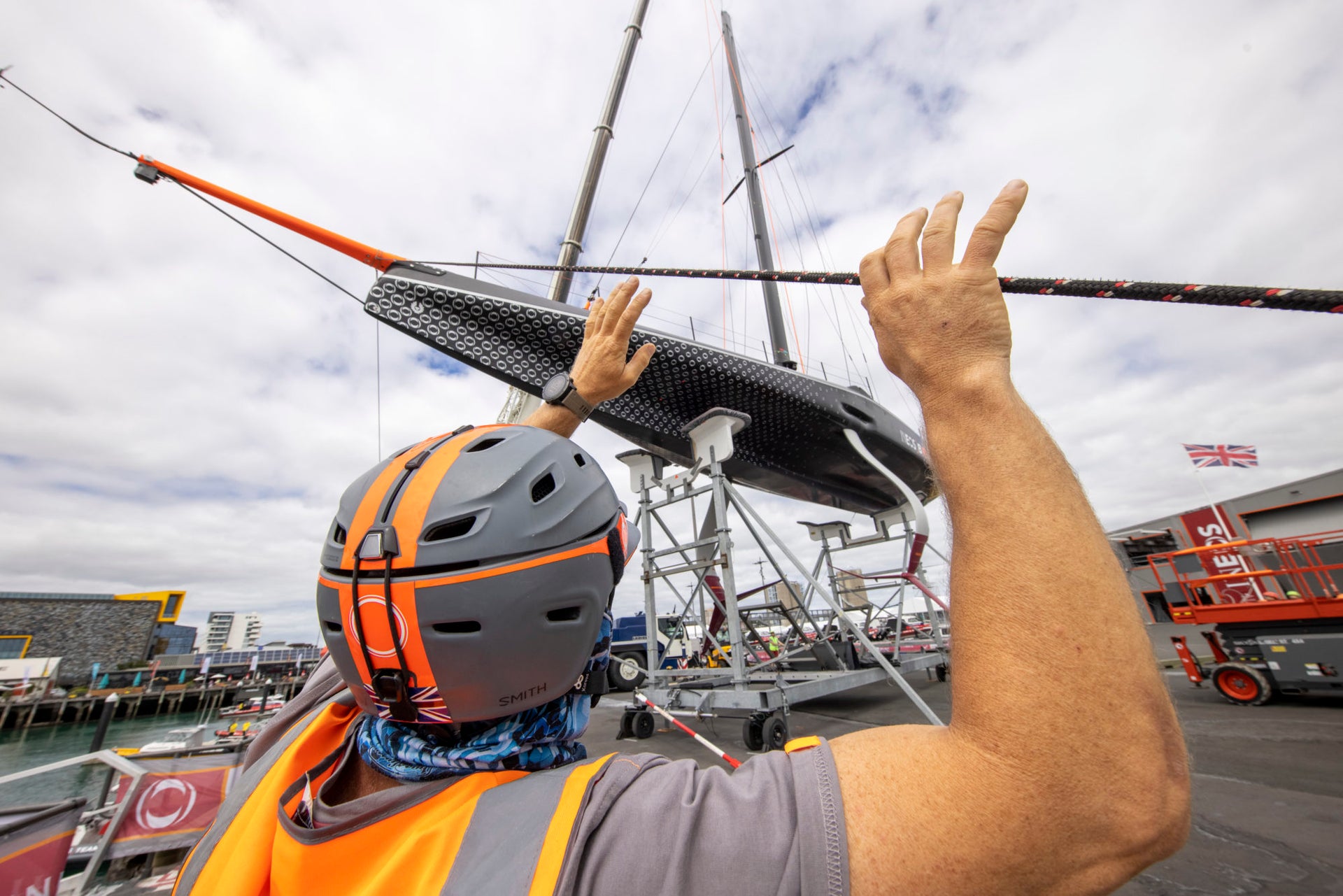
LAY DAYS: EVERY SECOND COUNTS
LAY DAYS: THE TINY GIANTS OF THE AMERICA’S CUP
Every second counts, and a day onshore is critical to development
📸 Harry KH / INEOS TEAM UK
On paper, a “lay day” is just two, three-letter words, but in practice, it is a logistical giant that can make, or break, the dreams of an America’s Cup team.
Just ask Jimmy Spithill. His famous comeback for ORACLE TEAM USA (OTUSA) in the 2013 America’s Cup in San Francisco was possible only because of a day without racing (and the subsequent development) following race 5.
Spithill and crew were behind and things were not looking good for the America’s Cup defenders. Then, OTUSA played a postponement card on the second race of the day (race 6). This then went straight into a previously scheduled lay day on September 11, buying them a total of 48 hours. The team regrouped, brought in a new tactician (Sir Ben Ainslie), and made some modifications.
A few days later, with Emirates Team New Zealand still leading, a journalist asked Spithill what he would do if Emirates Team New Zealand won the next race and went to match point. Spithill replied: “I think the question is, imagine if these guys (Kiwis) lost from here. What an upset that would be. They’ve almost got it in the bag. So that’s my motivation. ”
It was big, big talk. But OTUSA was writing the “comeback” book when they crawled back from an eight-to-one (plus a two-race deficit) to win the Auld Mug. To this day, many give credit to that 48 hour period after Race 5 for OTUSA’s success. Thus proving that lay days are the place where the tortoise might leapfrog the hare.
📸 COR 36 / Studio Borlenghi
A lay day begins as soon as the race boat returns to the dock after racing. From this moment forward, a three-dimensional thesis in time and skills management begins.
The teams start with a deep dive analysis into the live data telemetry which is transmitted from the AC75 during races. Engineers analyze the data looking for unusual readings– for example, a high rudder load. A high rudder load may coincide with a hard bear-away from the top mark, but if the timing shows no reason for the freak high load, the engineers want to know why. “It might be something starting to break or some gremlins starting to propagate,” said Gautier Sergent, North Sails sail designer embedded with INEOS TEAM UK. After looking at the data, the shore crew focuses on identifying the reason and then resolving it before the next race.
Other lay day jobs run to a critical path. “We keep a log of every component,” Gautier said. “For example, we know a rudder bearing has been used for X-amount of hours and done X many tacks, that many gybes and X-amount of bear-aways. After a certain number, it needs checking or replacing. Those preventative maintenance tasks happen on a lay day.”
Meanwhile, the design team always has a box of new tricks they are keen to try. But they’ll only reach for that box when they know the benefits will outweigh the risk level when the team introduces a new component. “If you had only one or two lay days , you might not do something high-risk,” Sergent explained. “You might just do a product change.”
📸 Harry KH / INEOS TEAM UK
That’s why designers like multiple lay days that allow them to validate any changes on the water. “You can’t mess about,” Sergent said. “You’ve got to be confident that the new features are going to be good-to-go without much tuning. Minor fine-tuning is ok, but nothing more.”
“There are new parts coming on every day. For example, new aero fairing details on the hull or the sails. You might want to do a luff curve change, change the batten stiffness or even do a recut on the sails if you think you can improve the shape. You might change the geometry ever so slightly. Many, many tasks like that can happen.”
With up to 50 people needing to work on the AC75 at once, the tasks are prioritized and then choreographed. Some shore crew work the full 24 hours; others work in shifts. The canteen keeps them all fuelled with food and coffee.
Then, there are the obligations to America’s Cup protocol, and this dictates everything. Prior to each series, such as the PRADA Cup final, all teams declare the configuration of their racing equipment such as hull, foils, mast, and sails. Some components cannot be changed after declaration and others can be changed within certain parameters– for example, sail areas can be altered by up to 25%. However, every change requires an updated declaration.
📸 COR 36 / Studio Borlenghi
“We get measured every day,” Sergent said. “The boat gets weighed. The sails get weighed. After components are measured, they are sealed into the boat. If the seal is broken, it has to be declared to the measurer and inspected.” All these steps require documentation and sign-off.
During lay days, the sailing crew become shore crew, helping with tasks such as procurement, data analysis, or servicing winches. They also regularly meet with the design team. “The sailors are our best sensors,” explained Sergent. “We have electronics on the boat, but the sailors have the best feel for how they want the boat to react.”
In between those obligations, the sailors go to the gym and, if they are grinders, consume tens of thousands of calories. Finally, if time allows and the weather is providing racing conditions, they go sailing to test new components and practice techniques.
The one thing they don’t do on a lay day is lay down. Not for one second.
📸 C GREGORY / INEOS TEAM UK
READ MORE
READ MORE
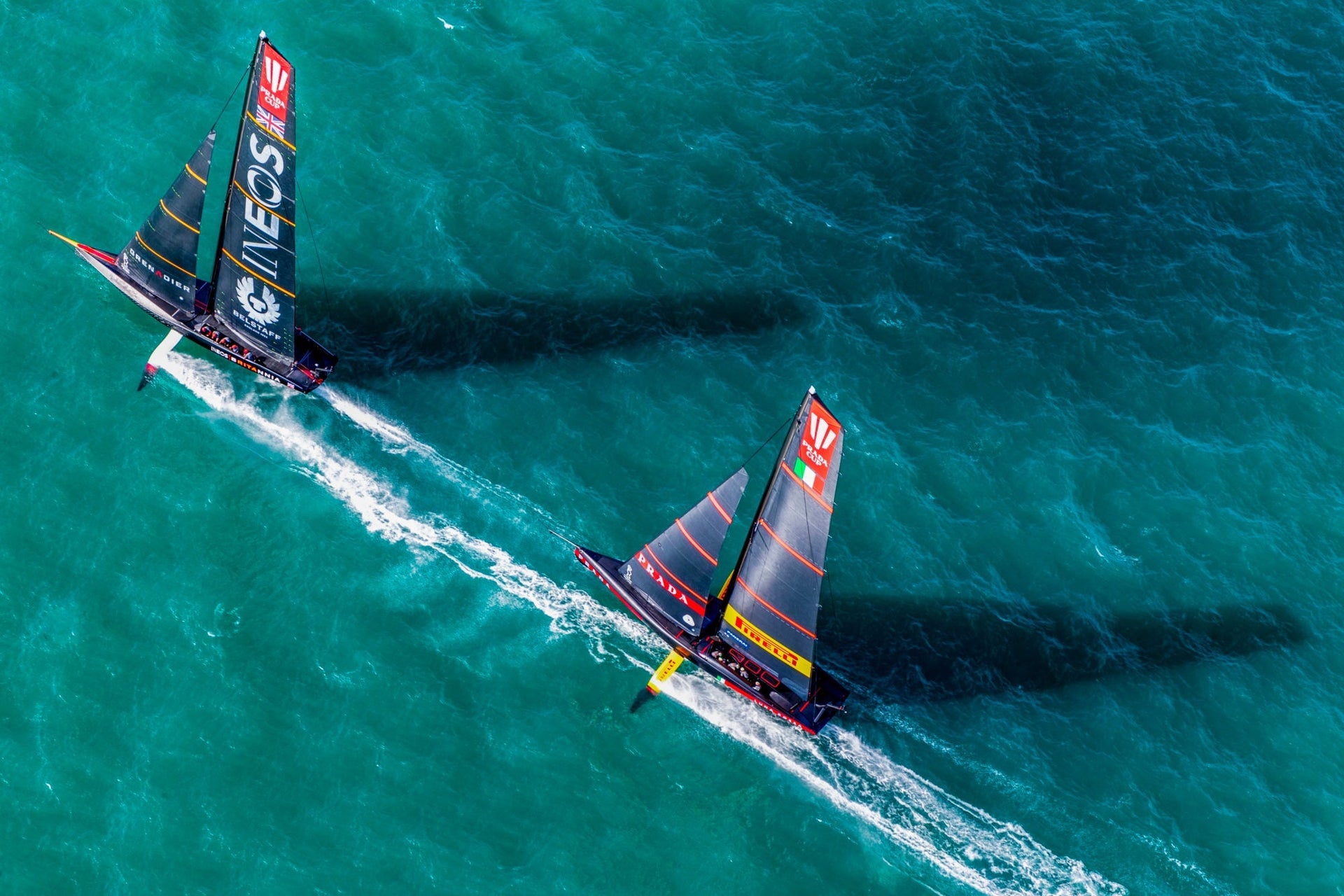
AMERICA’S CUP FAST FACTS
There’s been a lot of Googling America’s Cup facts and stats around the North Sails offices over the past few weeks. We’ve gathered some numbers for you so you don’t have to go searching when you’re asked “how many headsails is each team allowed?” Hint, it’s a lot!
READ MORE
READ MORE
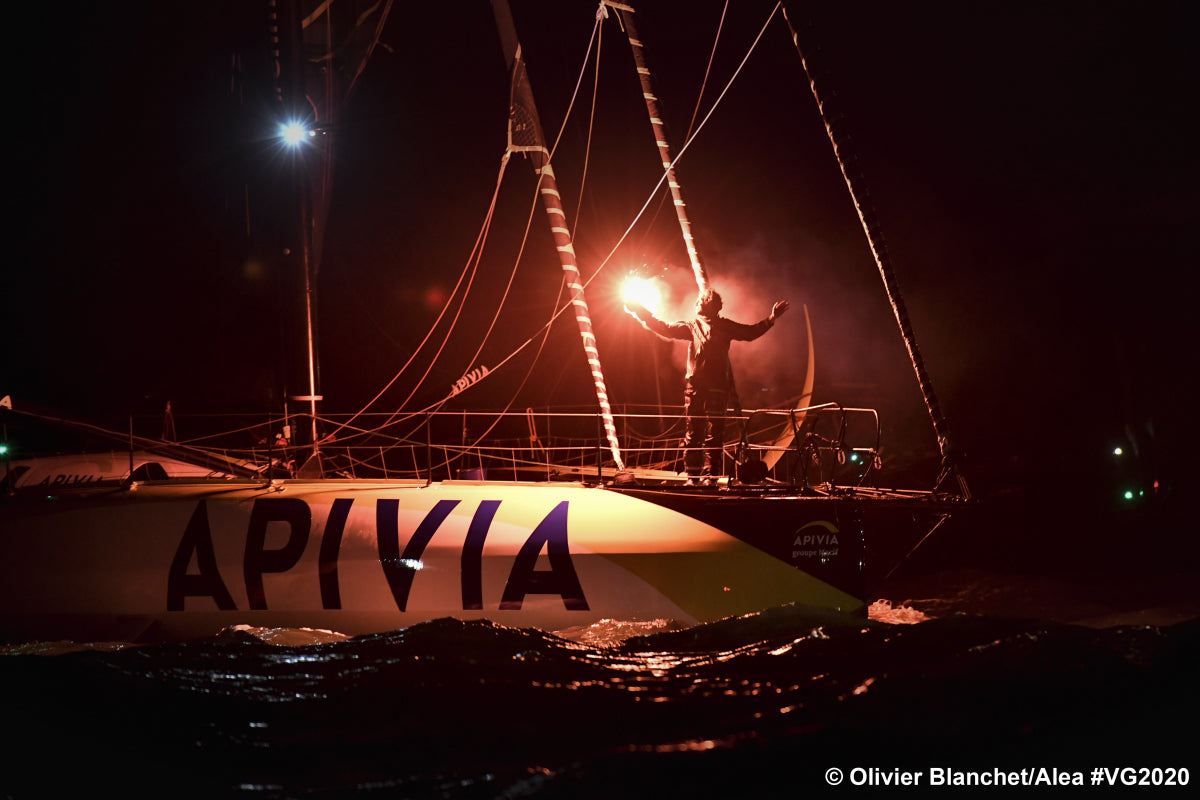
LIVE UPDATES: THE VENDÉE GLOBE FINISH
LIVE UPDATES: THE VENDÉE GLOBE FINISH
Following the Fleet Home After 24,000 Miles Around the World
The Vendée Globe 2020-21 fleet is arriving back to Les Sables-d’Olonne after completing their 24,000-mile circumnavigation. This solo, non-stop, and without assistance marathon is one of the most difficult sailing events. Reaching the finish line, regardless of position, is considered a remarkable accomplishment. 25 competitors will complete this 9th edition of the race. 8 skippers were forced to retire the race, including Kevin Escoffier who was plucked from his safety raft by fellow competitor Jean Le Cam after his boat folded in half.
North Sails is proud to power the engine above deck for 22 IMOCAs participating in the 2020-21 race. Join us on this page as we follow the finish and welcome the skippers back into port.
Race Tracker
February 3, 2021 5:10pm GMT
She did it!
After 87 days, 2 hours, 24 minutes, and 25 seconds, young skipper Clarisse Cremér on Banque Populaire X is the first woman to cross the line in the Vendeé Globe 2020-21. Cremér is 12th overall, and has broken the previous female record set by Ellen MacArthur 20 years ago, which was 94 days and 4 hours.
With a reliable and fast boat, Cremér preserved her IMOCA throughout the 87 days and was very focused on every detail to keep things in control. It’s been exciting seeing her check-in throughout the adventure, showing her energy and determination while offshore. The team’s support for Clarisse in this race has been solid. Banque Populaire teammate and mentor Armel L’Cléach rode out to celebrate this young sailor’s fantastic accomplishment and welcome her home.
📸 Adrien Francois/Alea
Cremér’s first IMOCA experience was doublehanded racing in the 2019 TJV with Armel L’Cléach. Her first solo race was in the 2020 Vendée Arctic, where she finished 12th. A 12th place finish in the Vendée Globe is the icing on the cake for Cremér, her team and her country as a highly motivated and driven female role model for women in sailing.
As the Banque Populaire technical team jumped aboard to congratulate her, emotions were high. She gave up control of the boat for the first time in almost three months, and took a few moments to celebrate her accomplishment free of any more responsibilities.
It was clear the team made a great choice in Cremér for the 9th edition. Her boat was set up perfectly to allow her to accomplish her goals, push the limits and show just how much hard work she’s willing to put in to everything she does. She’s already talking about coming back for another Vendée Globe. We will be here too, cheering her on every step of the way.
Brava Clarisse!
📸 Olivier Blanchet/Alea
February 2, 2021, 3:00pm GMT
It’s not over yet…
Benjamin Dutreaux on OMIA – WATER FAMILY*, Maxime Sorel on V and B-MAYENNE, and Armel Tripon on L’Occitane en Provence have now reached the finish in 9th, 10th, and 11th place in what were the most challenging conditions in the final approach into Les Sables-d’Olonne.
Benjamin Dutreaux, race rookie, arrived at the game late but has successfully crossed the line 9th in his first non-stop, unassisted round the world adventure. Congratulations Ben!
Before the start of the 9th edition, Armel Tripon was already a familiar face in ocean racing. Over the course of his 84 days at sea he shared the importance of experience and determination, and the value of resilience. all of his offshore accomplishments, Tripon has risen above the hard moments;taking every moment in so he can be better next time. He iss the perfect example of a sailor with an immense passion for the sport that puts his heart and emotions into every maneuver and every decision. For another first timer in the Vendée Globe, we are very proud!
Tripon commented, “I am lucky to have been able to race, to do what is my job. Every day I thanked my partner for allowing me to live this dream. I didn’t want to spoil it. I had an exceptional boat which was very well prepared. I got to know it well so I could push her harder and harder. It was a big chase to get back to boats as we went along. It was motivating. I really enjoyed playing with the weather systems and finding lines. Every day is to be celebrated on the Vendée Globe”
📸 Olivier Blanchet/Alea
All eyes to the finish now to prepare for the 12th place finisher and first female to arrive; Clarisse Cremér on Banque Populaire X. At 31 years old, Clarisse is the youngest skipper to finish this edition race, and is currently chasing a chance to break Ellen MacArthur’s 20-year old race record for women finishing in less than 94 days and 4 hours. A non foiler and first timer, she’s no doubt won the hearts of female sailors worldwide and to see her complete the race, let alone finish in the top half is truly remarkable and an inspiration to all.
She commented, “Boris’ story gave me a shock. I will have to be on the lookout until the finish, I have crossed the lanes and they were busy and I just had to slow down at one point to let a cargo ship pass. I can see them on the AIS so it is OK just now.
It will not be easy to slow down in 30 knots of wind so I think I will be under 3 mainsail reefs only and I will try to accelerate to aim for a finish tomorrow afternoon. It’s not easy to predict an exact finish time, it’s a new exercise!”
📸 Clarisse Cremer / Banque Populaire X
Meanwhile, Jeremie Beyou on Charal is battling the conditions near the Azores, in 35 knots and gusts ranging from 45-50 knots. The conditions are exhausting and it doesn’t look like it will improve the closer he gets into range of the finish.
Romain Attanasio on PURE Best Western is also in the same boat just a tad further North, wondering if the weather will let up, exhausted, and pushing on.
Spirits are high and adrenaline is pumping as the next three boats get closer to the finish port. We are keeping an eye on the race tracker and wishing all skippers the very best of luck and safety as they press on into the final sprint of the race.
To be continued…
January 28, 2021, 1:05am GMT
Yes He Did!
Jean Le Cam has crossed the Vendée Globe finish line. Le Cam secured fourth place on the leaderboard after receiving his time compensation of 16 hours and 15 minutes for his assistance to Kévin Escoffier. Jean has been part of the race since the 2004-05 edition and is known for his camaraderie, excellent navigation skills, sincerity, and passion for the sport of sailing.
Le Cam won the hearts of fans around the world in his valiant recovery mission of Escoffier from his life raft on December 1st. In a twist of fate, Escoffier abandoned PRB the same IMOCA which Le Cam boarded in 2008 after his keel snapped off and his boat capsized off Cape Horn. Apart from finishing the race and placing in the top five overall, Jean le Cam has shown true sportsmanship as a Vendée Globe race veteran, and is also a role model and mentor for many new to the race.
📸 Yvan Zedda / Alea / #VG2020
With Le Cam’s finish, we have a standing shuffle, bumping Boris Herrmann, Thomas Ruyant, Damien Seguin and Giancarlo Pedote to fifth, sixth, seventh, and eighth respectively. Pedote’s first race participation is significant, and his consistency and determination has allowed him to accomplish what no other Italian has before, setting a personal record not only for himself but for his country.
Pedote commented;
“I managed to complete my round the world and race at the same time with rather reduced means and a small team that did not have the experience of a Vendée Globe. It is a satisfaction for me.”
The top 10 will be rounded out by Benjamin Dutreux (Omîa – Water Family) and Maxime Sorel (V & B-Mayyene) who are expected to finish this evening local time.
January 28, 2021, 4:30 GMT
Bestaven and Dalin Share Vendee Globe Honors
Since November 8, the 2020-21 Vendée Globe has left us on the edge of our seats, and now three months later, we’re watching eagerly as the finishers have been trickling in. From sinkings to accidents, this Vendée Globe has been truly special. Now, with the “famous five” lead pack ending their around the world journey all within 24 hours of each other, this Vendée Globe finish is officially the closest in the history of the race. Here’s a quick recap of the past 24 hours:
Charlie Dalin’s Apivia claimed line honors, completing his circumnavigation in 80 days, 6 hours, 15 minutes, and 47 seconds. A Vendée rookie, he remained in the lead for the majority of the race and overcame what could have been race-ending foil damage early on in the Southern Indian Ocean. Coming into the finish, Dalin crossed the line at full speed hoping to put as much time between him and the rest of the pack who all finished just a few hours after him in what now is the closest Vendée Globe finish since the race’s start in 1989.
Yannick Bestaven of Maitre COQ crossed the line 7 hours, 43 minutes, 59 seconds after Dalin. He benefits from a 10 hour and 15 second time credit for his support in Kévin Escoffier’s dramatic rescue, as a result, he is named the overall winner of the Vendée Globe 2020-21. Bestaven is one of two skippers that led the fleet for the longest time: 26 days. When he crossed the finish line, the spectators were shouting from their balconies to celebrate his finish and pay tribute to his amazing accomplishment as the corrected time overall Vendée Globe trophy winner.
Yannick commented upon finishing;
“I feel like I’m living a dream, hallucinating. You go from total solitude to this, to this party, to these lights, these people who are there despite the complicated context, I don’t realise what’s going on. I’m still in my race. It’s a child’s dream.I always believed I could do it, but in what position? I thought I would win at Cape Horn, but then I thought that if I finished 25th, then that would be good enough. We prepared a lot for this Vendée Globe, I knew I had a reliable boat and I was able to pull it off. This result is beyond my expectations. I imagined living many things, I have lived many others. After having fought as I have fought, bringing a victory to Maître CoQ IV is a dream!”
Louis Burton crossed the line second, 4 hours, 9 minutes, and 25 seconds after Dalin, and has solidified third place overall on the scoreboard. Sailing around the world at an average speed of 12.6 knots, this race was a great achievement for the seasoned sailor who’s completed eight transat’s and two around the world solo trips. With this Vendée Globe finish, Burton improved his personal record by four places after coming in 7th in the 2016-17 edition.
Boris Herrmann, who had a 6-hour time credit was in prime positioning for the top spot, when he collided with a fishing boat 90 miles from the finish line. Fortunately, Herrmann was not hurt in the collision, however he did suffer boat damage which forced Sea Explorer to limp to the finish line, arriving home on the morning of January 28. He currently sits in 4th place and must wait for the arrival of Jean Le Cam to determine his final position on the scoreboard.
Thomas Ruyant on Linked Out rounded out the “famous five” and arrived after 80 days, 15 hours, and 22 minutes covering 24,365.74 miles at an average speed of 12.59. One of the race favorites of the 9th edition, Ruyant was in the lead pack for a good portion of the race. Despite foil damage, he pushed forward to finish the race– only highlighting his determination to not let anything prevent him accomplishing his finish line goal. In the early hours of the 28th, in tough sailing conditions and surrounded by darkness, he hedged across the line. Four years ago, Ruyant was unfortunately forced to retire from the race. This time, Ruyant successfully completed his world tour with a smile on his face so large that it spoke to his ambition and mental strengths to persevere despite the challenges.
Following Ruyant, Damien Seguin on Groupe Apicil and Giancarlo Pedote on Prysmian Group. Groupe Apicil came in hot to the finish at 20 knots as the first non-foiler to finish the race, which is one of his many stand-out accomplishments in this 9th world tour. With still uncertainty for time owed to Le Cam, He and Seguin now wait patiently for their comrade to cross the line to determine their final positions.
To be continued…
January 28, 2021, 1:30 GMT
Burton Reached Les Sables-d Olonne
Bureau Valleé 2, skippered by Louis Burton, is second to reach the Vendée Globe finish line. Burton completed his circumnavigation in 80 days, 10 hours, 25 minutes, and 12 seconds. The 2020-21 race is his third Vendée Globe, most recently having placed 7th in the 2016-17 edition of the race, a remarkable position considering his former boat was deemed one of the heaviest in the fleet. In his latest adventure, Burton acquired Banque Populaire VII, the foiling IMOCA, which carried Armel Le Cléac’h to a record-breaking race.
Congratulations to Burton on his Vendée Globe success and we hope he gets some well deserved rest.
Oliver Blanchet / Alea
January 27, 2021, 21:00 GMT
#NSVictory List: Bravo Charlie!
Charlie Dalin flew across the finish at 20 knots to take line honors in the Vendee Globe 2020-21. Dalin arrived at Les Sables-d Olonne after 80 days and six hours, in a race that would not let up. A Vendee Globe rookie, he remained in the lead for the majority of the race and overcame what could have been race-ending foil damage early on. Coming into the finish, Dalin did not, and could not, take his foot off the gas though, as the top five competitors will arrive home mere hours after him, in what might be the closest Vendee Globe finish ever.
To add complexity to this edition, Dalin will remain on standby until the overall winner is declared; both Boris Herrmann and Yannick Bestaven have a time correction after being rerouted to support Kevin Escoffier. Herrmann was awarded a total of six hours for offering assistance and Bestaven ten hours, fifteen minutes.
Olivier Blanchet/Alea
The around the world race is a solo, non-stop, and without assistance, marathon covering over 20,000 nm, and is one of the most difficult sailing events in the sport. Reaching the finish line, regardless of position, is considered a remarkable accomplishment, and often the sailors who finish last are the sailors who’ve won our hearts. Over the next week, 25 competitors will finish the 9th edition of the race. Eight skippers were forced to retire, including Kevin Escoffier who was rescued from his life raft by fellow competitor Jean Le Cam. Escoffier’s boat folded in half in large seas shortly before the Cape of Good Hope in the South Atlantic Ocean. Le Cam was given 16 hours and 55 minutes for his assistance.
North Sails is proud to supply 3Di and Helix Structured Luff sails to power the engine above deck for 22 IMOCAs participating in the 2020-21 race. Join us on this page as we follow the finish and welcome the skippers back into port.
January 27, 2021, 19:00 GMT
Watch the Finish Live
January 26, 2021, 18:30 GMT
An Ultra Competitive Fight to the Finish
With the leading pack showing a tight gap, the suspense will be high until the end. This single-handed round-the-world race could even end in a sprint; never seen before in the history of the Vendée Globe. The designers of North Sails France take stock of this exciting 9th edition full of twists and turns.
What do you think of this edition? What surprised you the most in this first part of the race?
It’s an incredible edition. This Vendée Globe is very competitive, and things are happening every day! We followed it closely, and we continue until the end! We can’t wait to see them arrive.
In this first part of the race, like many people, we were surprised by the bad conditions the fleet encountered and the number of technical problems with hooks, rudder, foils, sails, structure, pilot, etc. We were also impressed by the poor delta performance for the foilers against Jean le Cam’s boat (Yes We Cam!) and Benjamin Dutreux’s boat (Omia – Water Family). The weather surely contributed to the fact that the foilers did not dig an incredible gap with the non-foiling boats.
And of course, the rescue of Kevin Escoffier (PRB) by Jean Le Cam is particularly noteworthy. Frankly, it reminds us of the Vendée Globe of our youth!
The new foilers are put to the test in this Vendée. Is it linked to the weather that varies from one edition to the next? Is it a question of luck to pass a front without problems and without a UFO? Or is it because of the new materials that we always want thinner and lighter?
The skipper can deal with a front, it depends on his strategy. Then there are the damages due to design problems that are part of the evolution of these boats. As for hitting a UFO, all the boats are equal. It is a strong random part of this competition which is not predictable for the moment. Probably the latest generation of foilers rake wider and statistically, they are more likely to encounter a UFO. The IMOCA class is working on a sonar sys
READ MORE
READ MORE
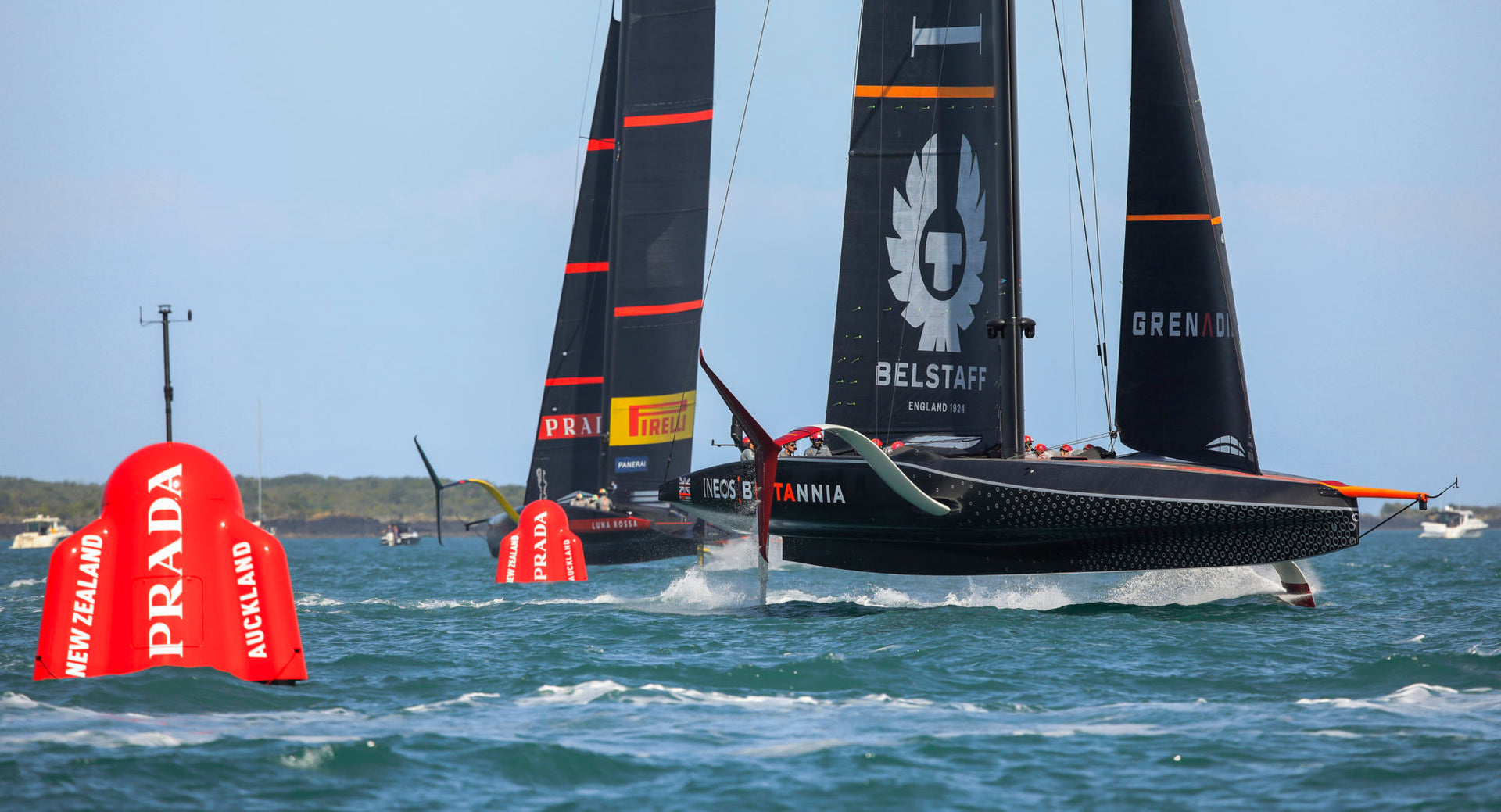
LET'S TALK AMERICA'S CUP
SITTING DOWN WITH THE AMERICA’S CUP COMMENTATING CREW
Shirley Robertson Ken Read and Nathan Outteridge Share Insights Ahead of the Prada Cup
📸 Carlo Borlenghi / America’s Cup
North Sails President Ken Read, Olympic gold medalist and foiling expert Nathan Outteridge, and two-time Olympic gold medalist Shirley Roberston are all part of the commentating team who are helping us follow the 36th America’s Cup. Shirley sat down with Ken and Nathan for a recent episode of her podcast. The team does a deep dive, providing their insider view on the World Series racing to date, and weighing up the strengths of each of the three Challengers. As the Prada Cup draws near, they dissect the performance of the three Challenger teams, looking at where each team may be able to improve and discuss some of the design differences apparent in each of their setups. Listen below and get up to speed on all things America’s Cup.
READ MORE
READ MORE
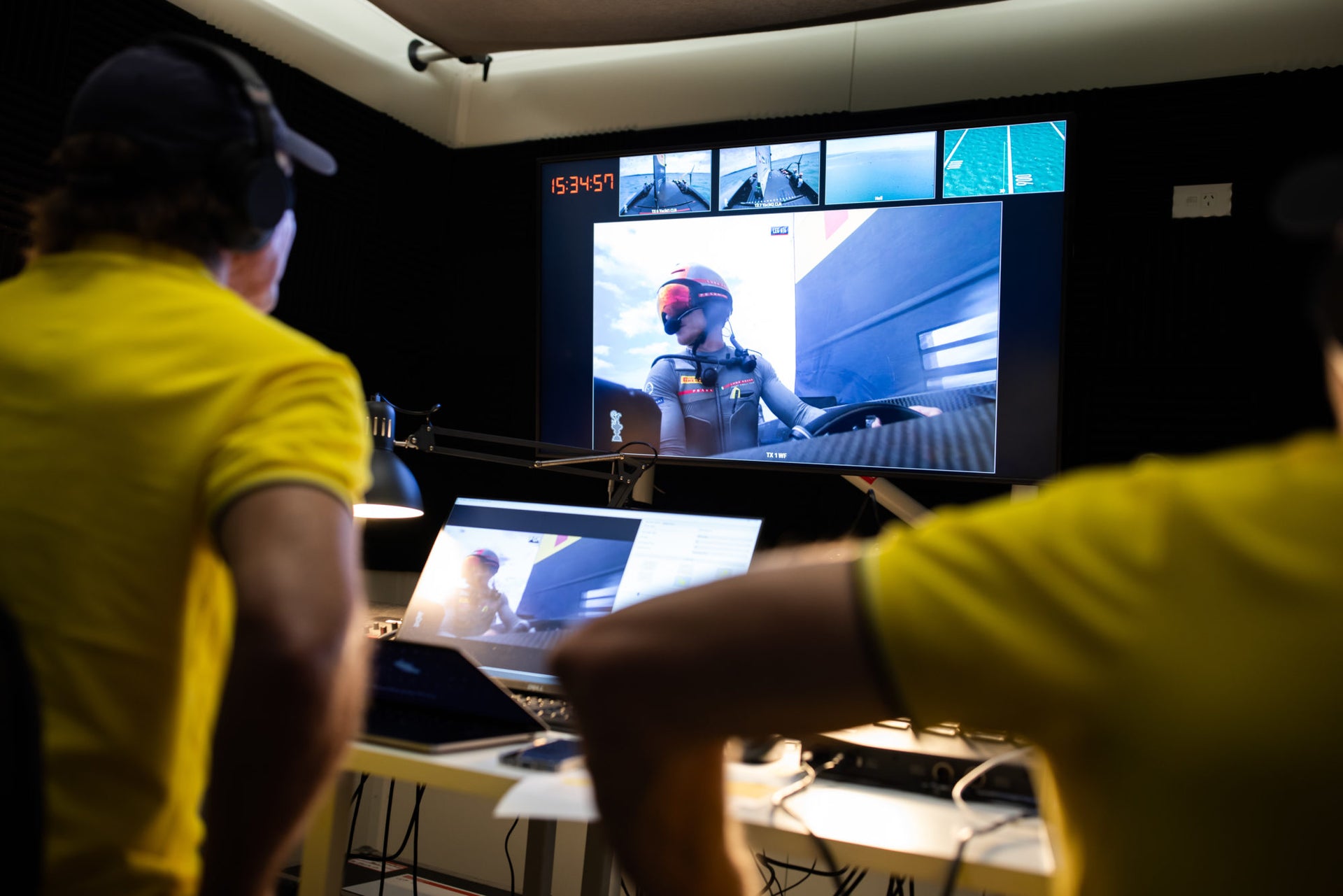
THE BEST SEAT IN THE HOUSE WITH KEN READ
BEST SEAT IN THE HOUSE WITH KEN READ
What Is It Like to Call the AC36 Play-by-Play?
If you’re looking for a sailing expert for your next racing event on TV, you call Ken Read. The former America’s Cup competitor who became an around-the-world skipper with a maxi-yacht speed record, and our current President of North Sails, Read is one of the most respected names in the sport. He is also one of the four voices behind the all-star line up of commentators for the 36th America’s Cup. The 36th America’s Cup is Read’s third stint as a play-by-play commentator, having performed the same role in San Francisco in 2013 and Bermuda in 2017.
We snuck into the broadcast booth to get a behind-the-scenes experience of what most of you are hearing from your screens. Read makes it look easy but the amount of practice and effort to pull off a smooth show is immense. We just tried to stay out of the way!
Let’s go on air with Ken.
READ MORE
READ MORE
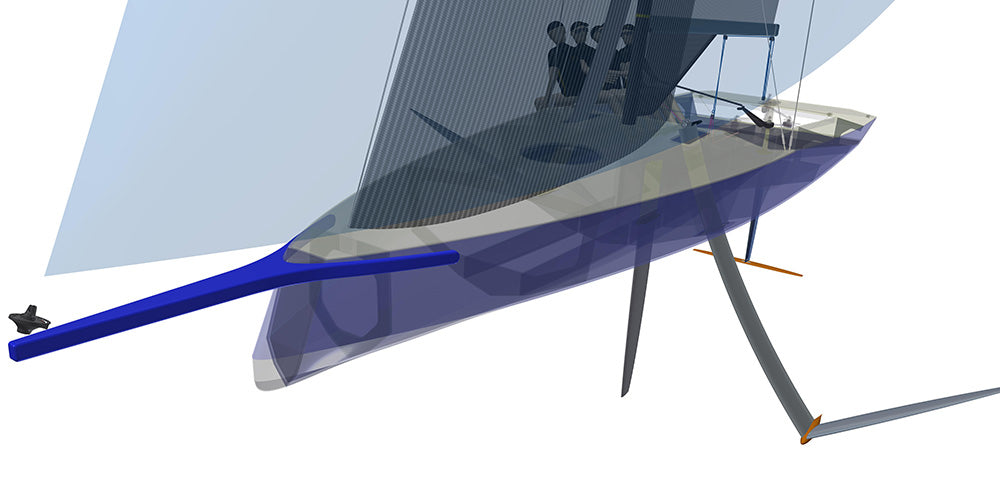
YOUTH AMERICA’S CUP
North Sails New Zealand is helping to develop new foiling monohulls for the Youth America’s Cup, which begins in November 2020 and ends in March 2021, just ahead of the main event.
READ MORE
READ MORE
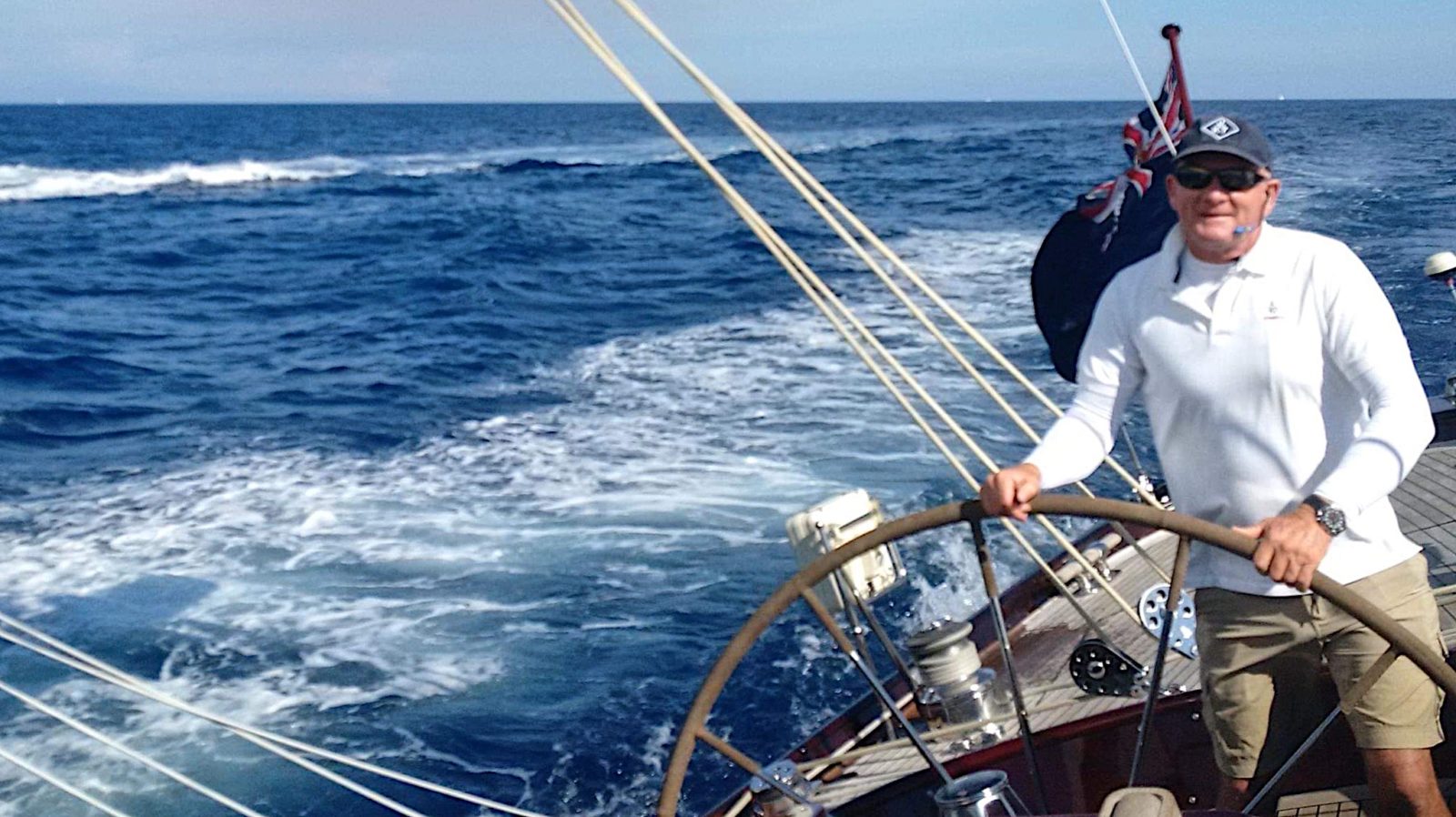
TOM DODSON RETURNS TO NORTH SAILS
TOM DODSON RETURNS TO NORTH SAILS
Kiwi Sailing Legend A Key Hire For Supporting Superyacht Clients
Following a long career in sailing spanning two Olympic Games, numerous America’s Cup cycles and everything in between, native Kiwi Tom Dodson has rejoined North Sails as a Sales Expert with a particular focus on the vibrant superyacht segment. Based out of New Zealand, Dodson will bring his knowledge and expertise to an already impressive team and will work with superyacht owners and crews around the world including regattas in the Caribbean and Mediterranean, ahead of the expected influx to the Pacific in time for the 2021 America’s Cup in Auckland.
Having first joined North Sails New Zealand as Managing Partner back in 1986, he left to join Team New Zealand in 1998 then joined Southern Spars as President in 2004. The well-known sailor has retained his connection with North Sails over his years as a professional in the sport, and now brings his wealth of experience back to the company to help to continue to grow the highly successful superyacht sails part of the business.
“In some ways, I never really left,” Dodson says. “I’ve always supported the company, its products, and people. The North team has been doing a great job, but what we see in the next few years is that there is going to be a lot more traffic coming down to New Zealand around the America’s Cup, and definitely lots more superyacht activity in the region. Through sailing on boats like Velsheda and Silvertip I have kept up with the latest products and what’s happening in these fleets and I am really looking forward to working with the team at North Sails on how we can help clients have the very best sails for whatever sailing they want to do.”
Ken Read, President of North Sails, commented: “We have an unrivaled breadth and depth of talent here at North Sails, from designers and materials experts through to sailors and our sales team. Tom Dodson is a consummate and seasoned professional, who ever since he first joined the company in the 1980s has remained part of the wider North Sails family. As a business we have focused on building for the future and investing in technology and innovation so that we stay at the very forefront of the industry but we have also invested in our people, and Tom Dodson coming back to join us is testament to this long term relationship we have with the people that work with us.”
Jens Christensen, North Sails superyacht segment leader, said: “We are pushing boundaries in the superyacht industry, leading the way with new products and striving for the ultimate customer service experience. But we can only deliver the type of world-class service to complement the hardware if we have the best people working for us. We pride ourselves on making sure that we understand the individual needs of all types of boats and sailors, and are able to support them across the world with continuity and consistency of product offering and maintenance. We are delighted that Tom joins us to help us continue our work at our superyacht centers of excellence around the world, showcasing the best of the best talent in the superyacht industry.”
READ MORE
READ MORE
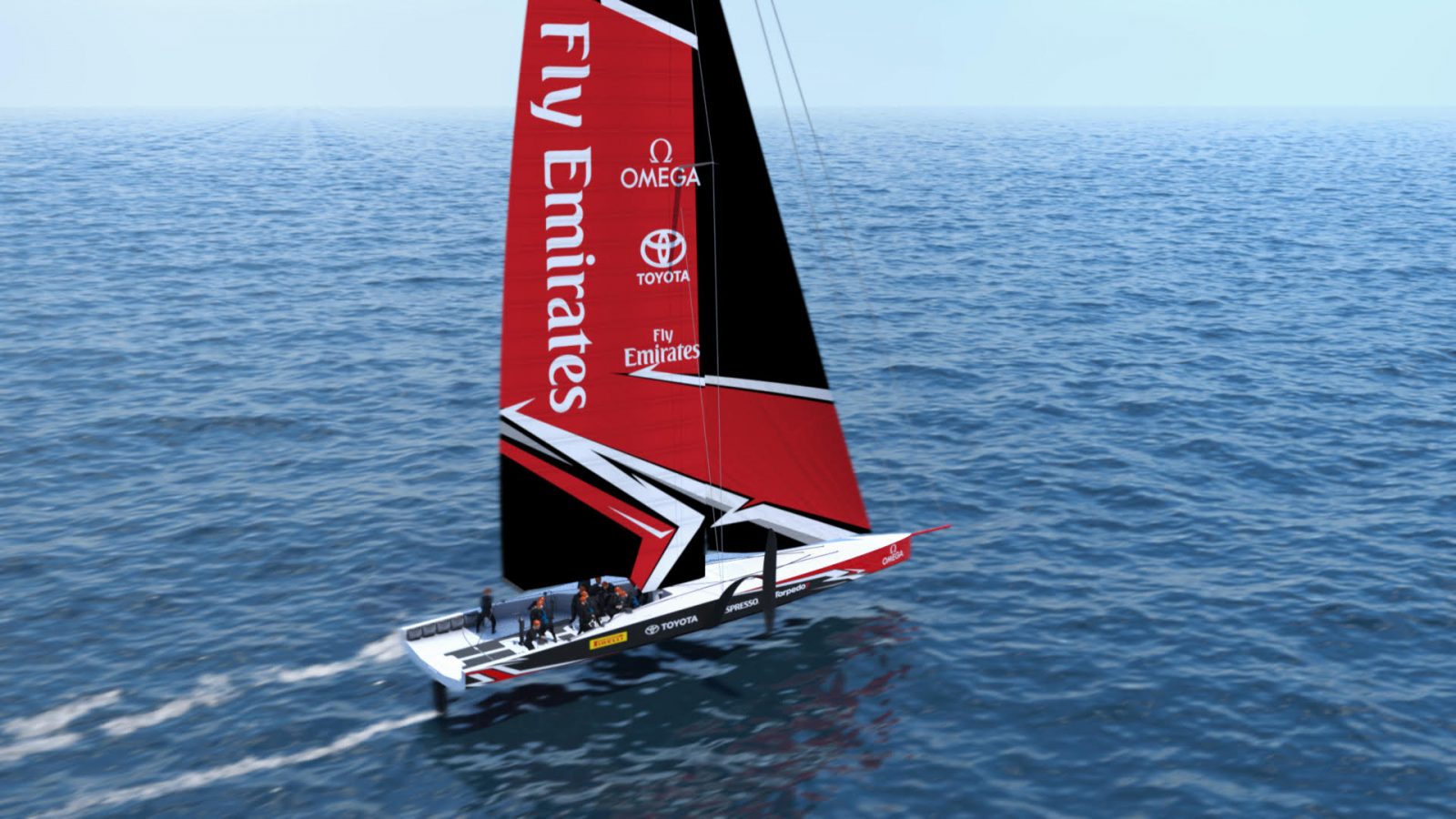
NORTH SAILS CONFIRMED SUPPLIER FOR 36TH AMERICA’S CUP
North Sails is once again leading the way in the America’s Cup as Defender Emirates Team New Zealand and Challengers Luna Rossa and INEOS TEAM UK have confirmed the global leader in sailmaking as the supplier of choice in the next event.
READ MORE
READ MORE
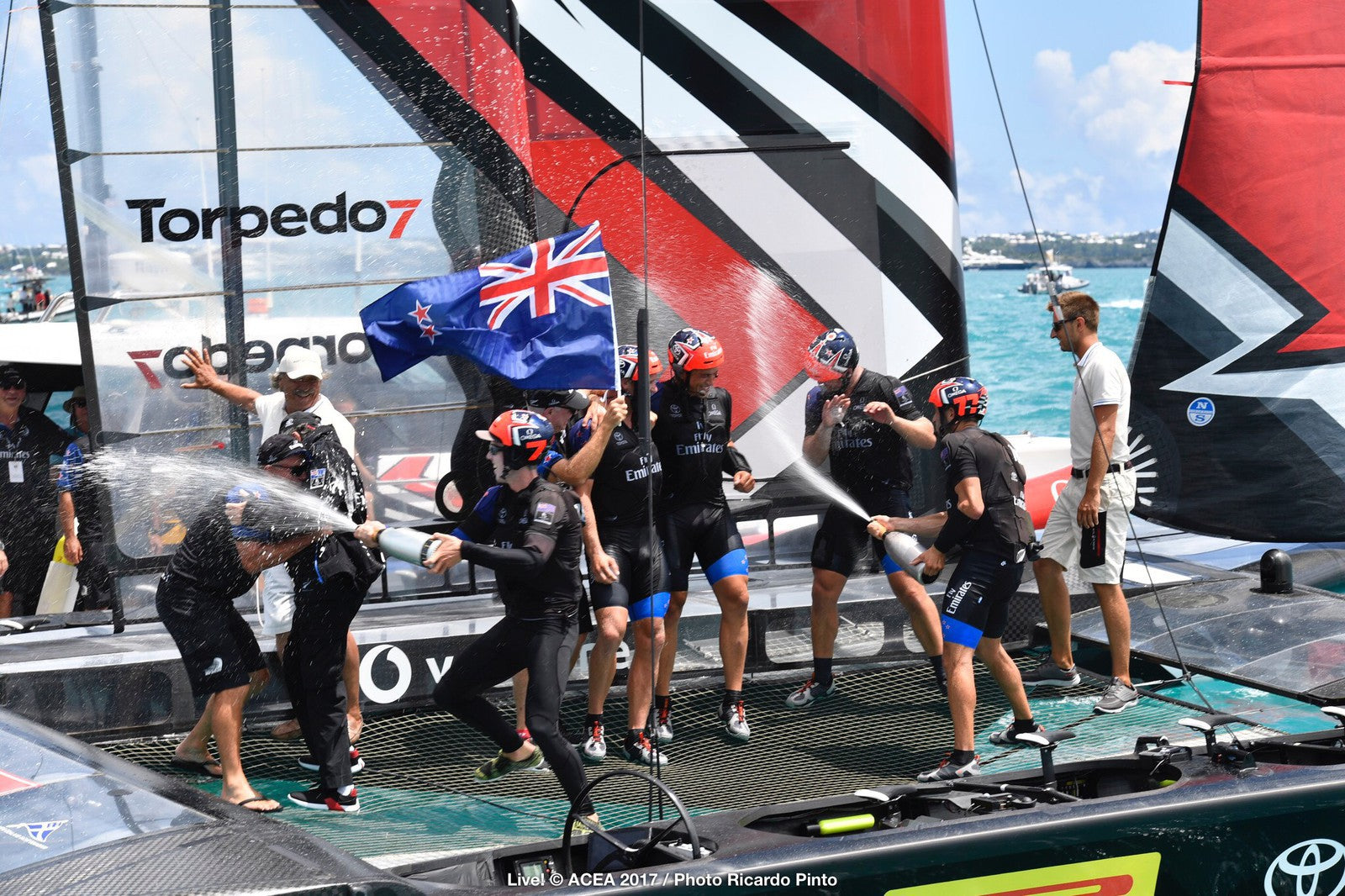
EMIRATES TEAM NEW ZEALAND WIN 35TH AMERICA'S CUP
North’s relationship with the 35th America’s Cup winner Team New Zealand runs deep. Named Official Sail Supplier in this edition of the Cup (and the first time in history!), North Sails were exclusive on all the boats, Defender and Challengers. All teams entered racing with a one-design set of North Sails 3Di jibs, used in tandem with a fixed wing. With the ever-changing landscape of our sport, North Sails has remained the technological leader in sailmaking. Today, North Sails supports Cup teams with crucial aerodynamic design support, producing sails that are consistently flatter, faster, and more durable. Our North Technology Group sister company, Southern Spars built the Emirates Team New Zealand winning boat; from hulls to foils and all the parts in between. The last few weeks have been a spectacle to watch and we’re already looking forward to the 36th edition of the oldest trophy in all of sport.
Race Nine. The score was set at 6-1 (ETNZ – ORACLE TEAM USA) as the teams docked off amidst a sea of fans for day five of the finals. It was “match point” with just one more point required of Team New Zealand before winning the Cup. While fans of ETNZ called for the team to bring the Cup home some 9,000 miles to New Zealand, Oracle fans cheered the defenders to repeat their legendary comeback of 2013, when the Americans fought back against the Kiwis in what may have been the greatest comeback in history.
Not this time. Not with steadfast Glen Ashby as skipper and ever cool Peter Burling at the helm. After a strong start, ETNZ wasted no time catching Oracle’s heels, scraping past after a gybe on the second leg and maintaining a strong lead for the remainder of the race.
Team New Zealand celebrated, a smiling Peter Burling exclaiming, “It’s unreal, this is exactly what we came here to do, I’m just on top of the world.” With today’s historic win, ETNZ will bring the Cup back to New Zealand. In addition, Peter Burling becomes the youngest skipper to win the America’s Cup at age 26. “It’s been three years of hard work, probably 100 people working together toward this goal. We are just on top of the world. We’ve just been blown away by the support we’ve been getting on shore and back home, we’re just really excited to share it with everyone now.”
For Skipper Glenn Ashby, who was part of the 2013 ETNZ squad, today’s victory was especially sweet (possibly sweet revenge?). “It’s been an amazing journey for Emirates Team New Zealand, one of those rocky roads that encompassed much more than just the past four years. The guys behind me and our entire team have fought tool and nail to win this trophy!”
“We’d also like to pass on our heartiest congratulations to ORACLE TEAM USA. They set the bar for the racing and were fantastic competitors. Thanks for sharing it (the America’s Cup) around!”
Congratulations to ENTZ, who we’re sure won’t be hi-fiving each other at tonight’s celebrations.
READ MORE
READ MORE
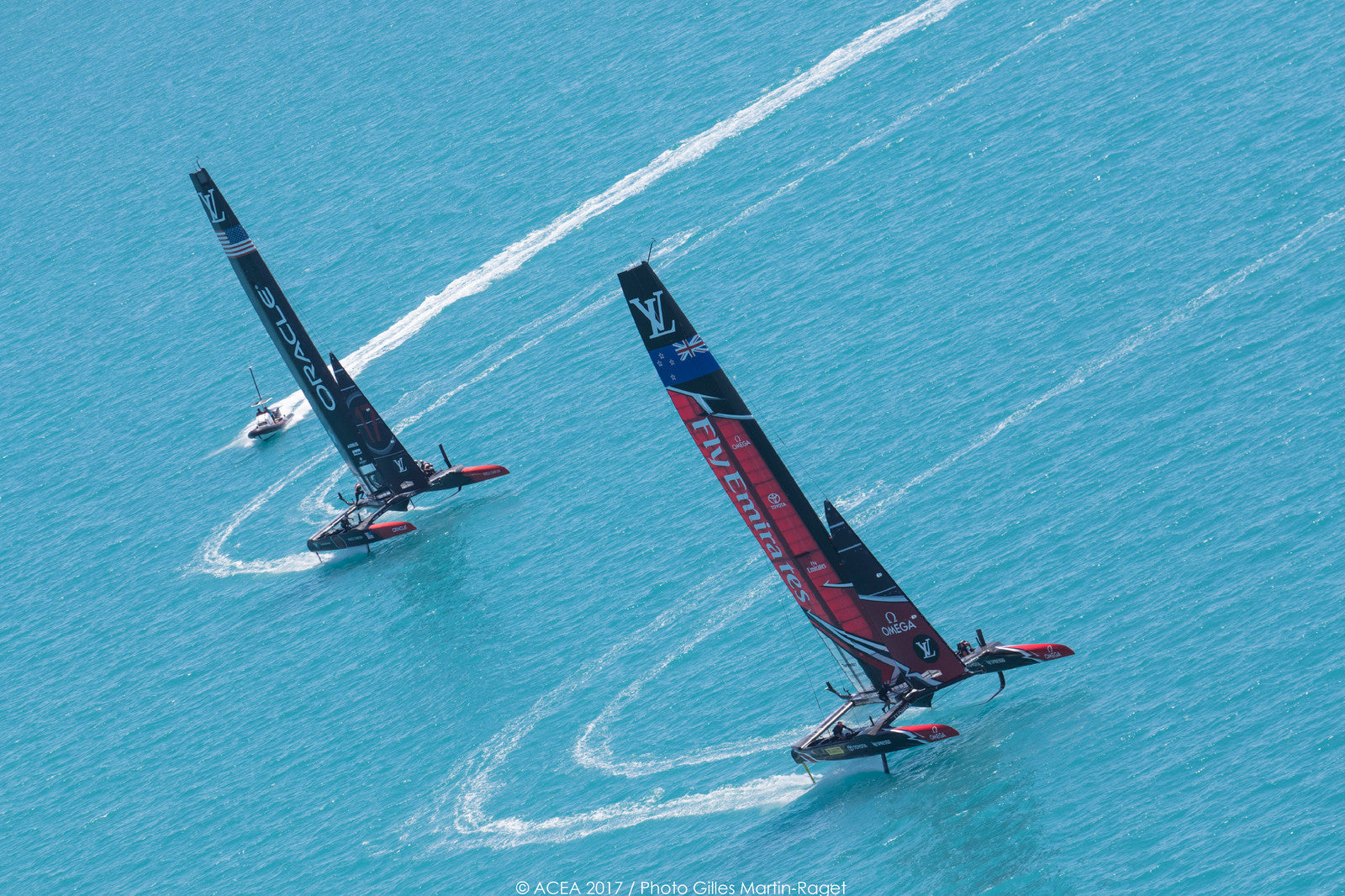
AC35 FINAL MATCH: UPDATE #2 FROM KEN READ
35TH AMERICA’S CUP FINALS
An update from North Sails President, Ken Read
Bermuda has not disappointed! After a leisurely superyacht event and J-Class regatta, sailors, fans, and event organizers had a bit of time to take in the previous four America’s Cup races. The Kiwis on Emirates Team New Zealand enter this weekend’s finals with a four point lead ahead of Cup defenders ORACLE TEAM USA. No telling what the next few days hold for these two teams, but we can promise to be watching every single minute!
READ MORE
READ MORE
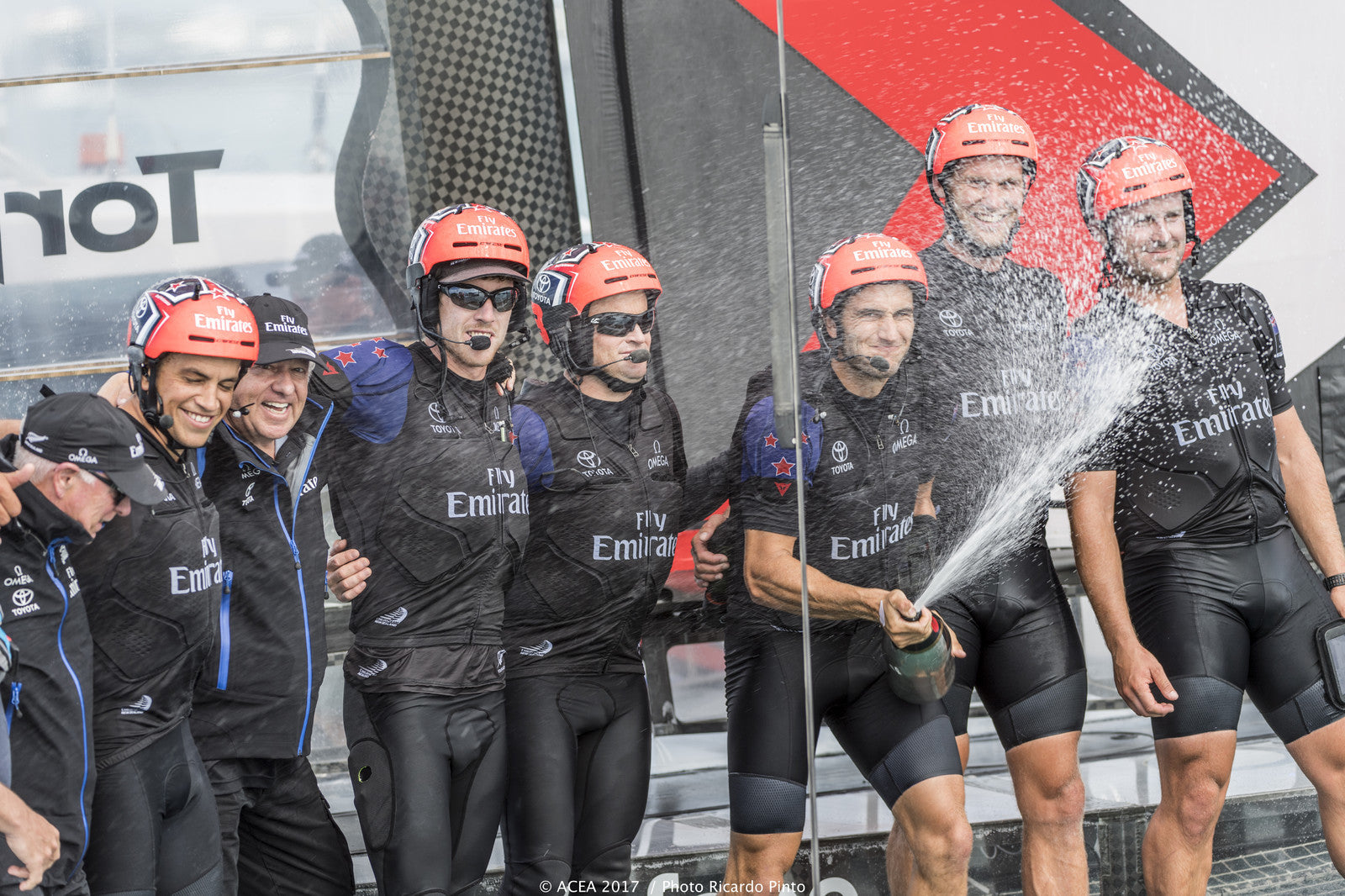
AC35 FINAL MATCH: UPDATE FROM KEN READ
Update from North Sails Ken Read ahead of the America’s Cup finals
The 2017 America’s Cup has delivered thrills, chills, and spills – and also great quality racing. Recap two weeks of racing before challengers Emirates Team New Zealand face ORACLE TEAM USA in the ultimate re-match. Since packing up their bases in 2013, New Zealand has not taken their eyes off the prize. Saturday, June 17th begins their final quest, the first team to win seven races will claim the Cup.
READ MORE
READ MORE
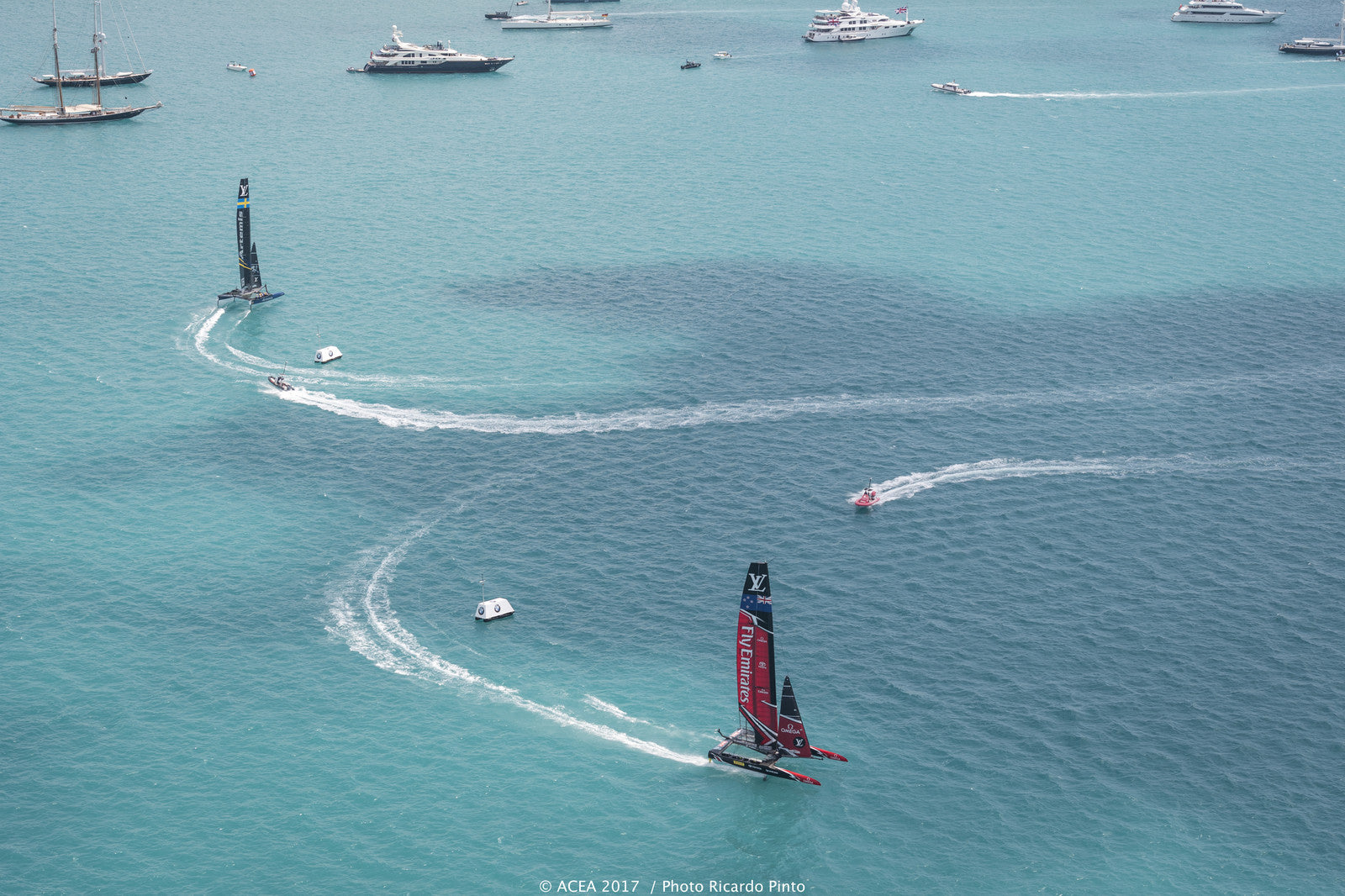
AC35 SEMIFINALS: UPDATE FROM KEN READ
Update from North Sails President Ken Read
A semifinals filled with highs, lows, overboards and capsizes – sailing fans had plenty to take in while Softbank Team Japan, Artemis Racing, Emirates Team New Zealand, and Land Rover BAR battled for the one and only seat against ORACLE TEAM USA in the final America’s Cup match.
READ MORE
READ MORE
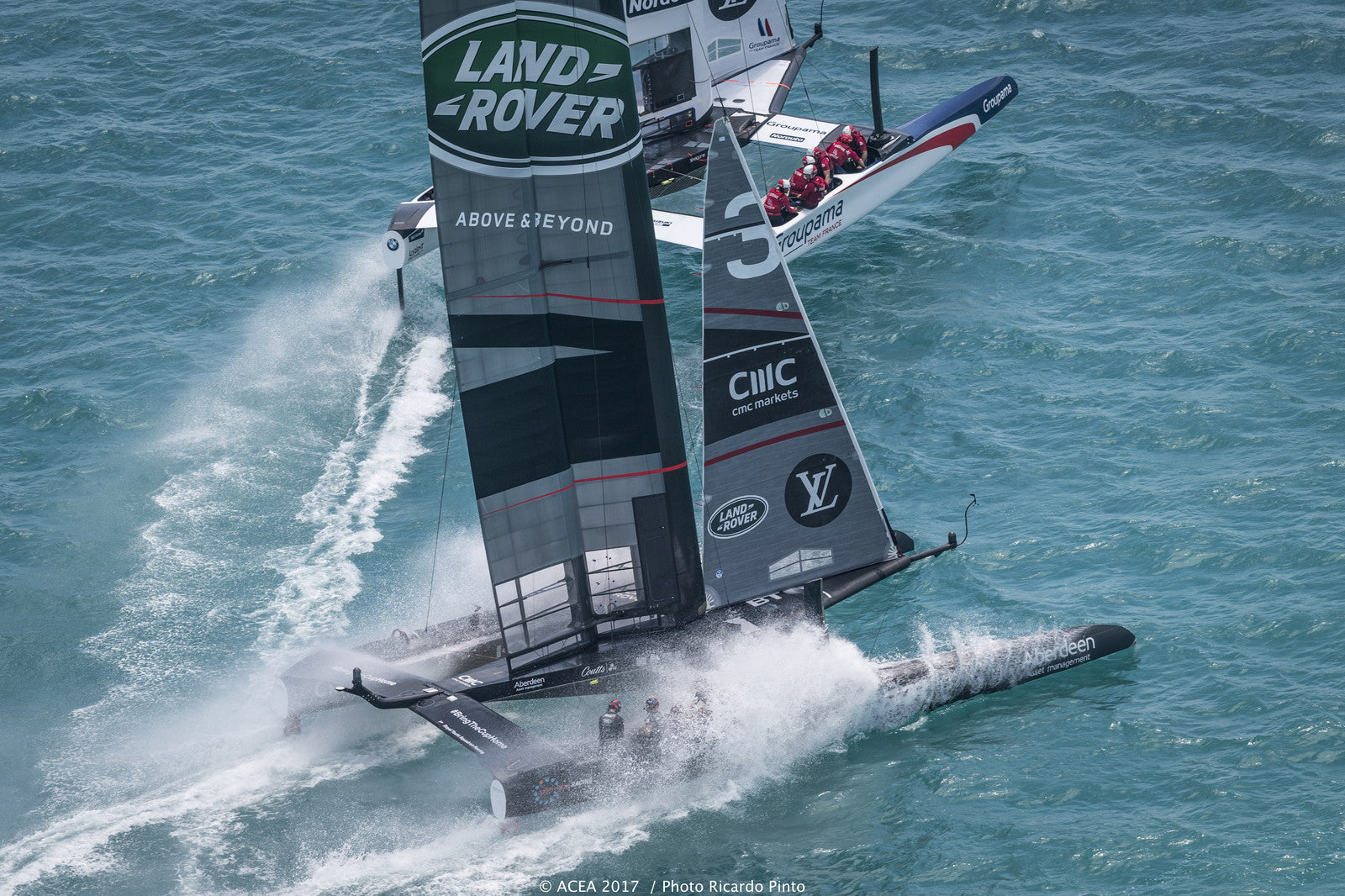
AC35 QUALIFYING ROUND: UPDATE FROM KEN READ
Update from North Sails President Ken Read
Checking in from the America’s Cup TV Commentary booth (best seat in the house!) is North Sails President, Ken Read, updating us on the action in Bermuda’s qualifying round. Oracle Team USA will take on five challengers in these initial two round robins: Artemis Racing, Softbank Team Japan, Land Rover BAR, Groupama Team France, and Emirates Team New Zealand. The 2017 America’s Cup is officially underway.
READ MORE
READ MORE
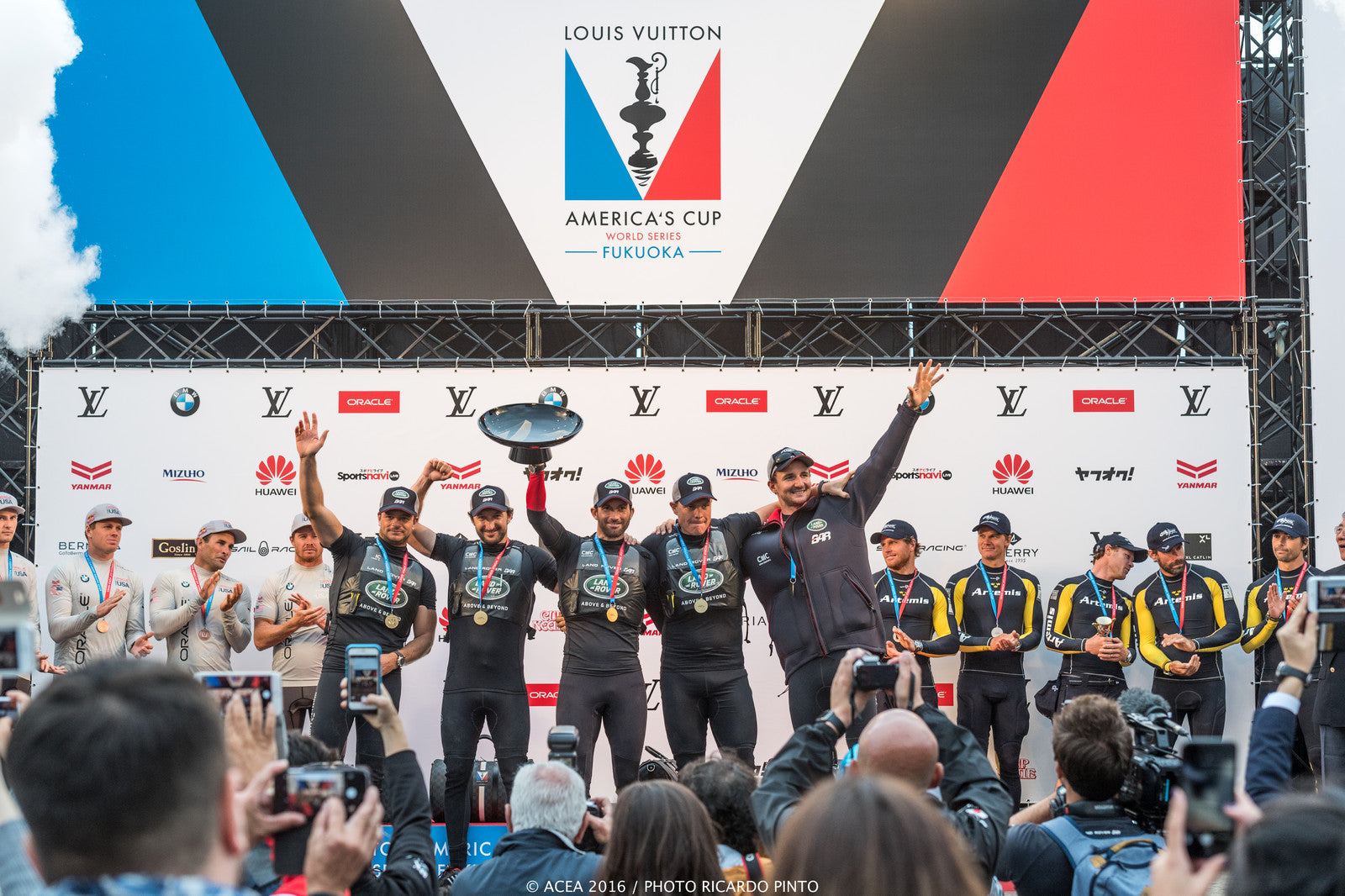
THAT'S A WRAP | AMERICA'S CUP WORLD SERIES FUKUOKA
America’s Cup World Series ends with spectacular grand finale in Fukuoka, Japan
Land Rover BAR was fast out of the blocks on Day 1 and ultimately stole the show in Fukuoka with regatta and overall series wins on Sunday. They will carry bonus points into the America’s Cup Challenger Series, as well as ORACLE TEAM USA who claimed second in the series overall.
SoftBank Team Japan scored a hometown win in Race 2 under the roar of fans cheering from the beach. Fukuoka, Japan was an excellent host for the World Series final and it was awesome to see such enthusiasm for sailing and hometown pride for the Softbank team.
Artemis Racing sailed a fantastic Sunday, winning the first two races of the day and coming second in the regatta under Land Rover BAR.
Competitive spirit was alive and well on the course this weekend with tight maneuvers, match-racing tactics, and penalties abundant especially in the final day. Nathan Otteridge’s comment “Makes it easy when everyone else is fighting!” is a good indication of the aggressive approach we saw, especially from Land Rover BAR, this weekend. It is clear the stakes are rising and if you ask me, it’s a preview of what we’ll see in the America’s Cup Challenger Series!
When the teams meet again in Bermuda, May 2017, they will be racing America’s Cup Class (ACC) boats. The ACCs are built by each team within a design rule: they are 15 meters long (just over 49 feet) and much higher performance than the boats we have watched in the World Series this year. All of the America’s Cup events this spring, up to the finals, will be sailed in the ACCs:
Louis Vuitton America’s Cup Qualifiers
America’s Cup Challenger Playoffs
America’s Cup Match
The America’s Cup event schedule is updated here: https://www.americascup.com/en/event-schedule.html
North Sails’ sister company, Southern Spars, has taken on boat and wing construction for Emirates Team New Zealand. Very cool stuff. You can check out their progress here:
http://www.southernspars.com/etnz-sailors-meet-ac50-southern-spars/
READ MORE
READ MORE
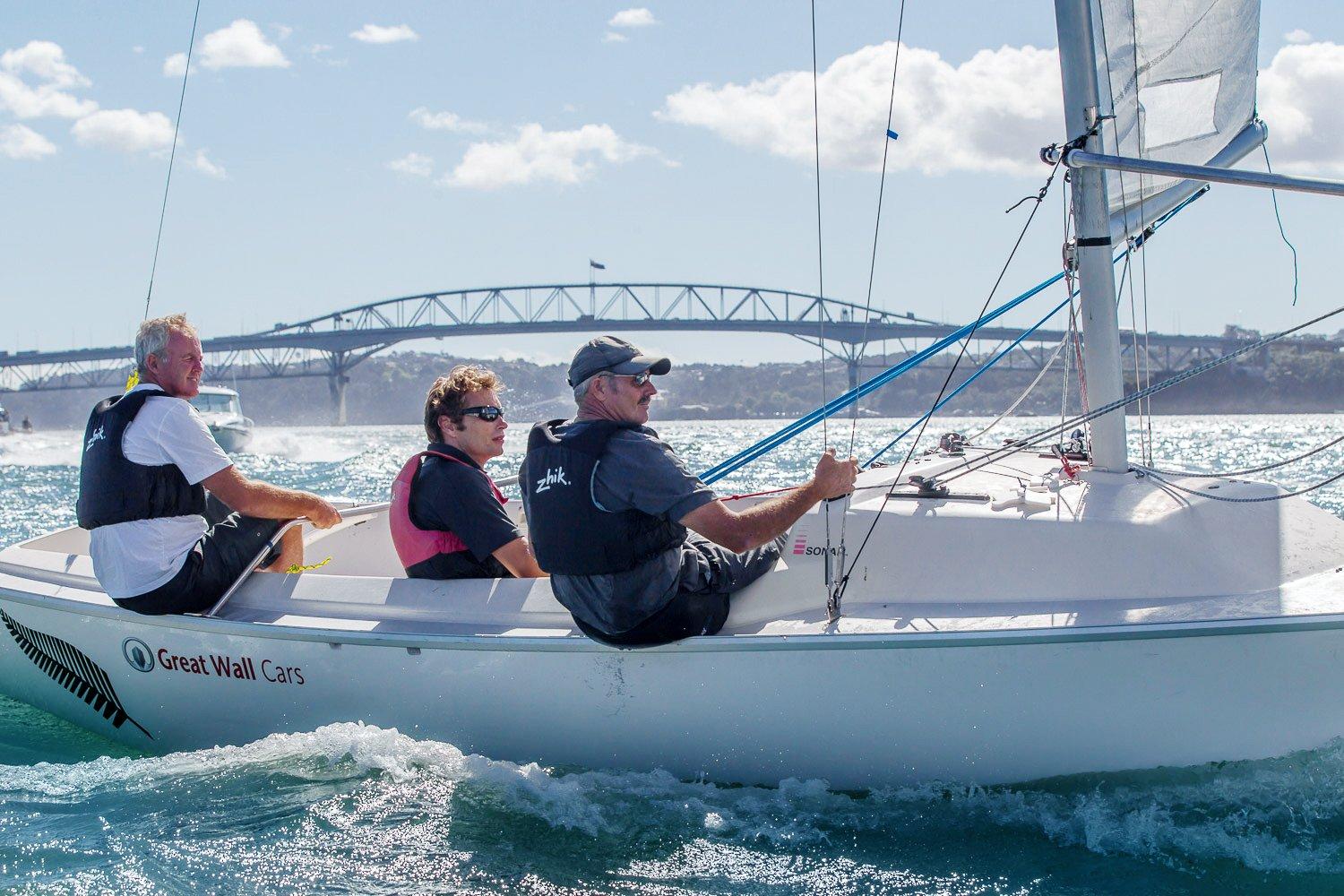
THE KIWI WAY: RICHARD DODSON
Richard Dodson, two-time America’s Cup Winner and former owner of North Sails in New Zealand, was forced to stop competitive sailing due to MS. Here he tells us of his journey into Paralympic sailing, and the motivation to claim New Zealand’s first-ever Paralympic gold.
Richard, please tell us about your journey from the America’s Cup to the Paralympics?
I progressed from AC sailing to the J boats which was a good progression for the changes MS was having on my sight and balance (my two worst symptoms). Sailing with MS got a little tricky especially at the top level. One World was my last AC Campaign. It took a little convincing to try Para-sailing, as I didn’t appreciate the high level Para-sailing was at. David Abercrombie, CEO of Yachting NZ, suggested David Barnes (my previous team mate who is also ex AC and has MS. David’s MS has progressed to the stage he had to pull out of the campaign) and I give Para-sailing a go as they felt it was not recognized enough in NZ and having two well known yachties involved would heighten the profile of Para-sailing in NZ. NZ is top in the world at sailing and blind sailing, but has never really been recognized in Para-sailing. After our first Para-sailing regatta in Ireland three years ago we realized the incredibly high caliber of the sailors we were to start competing against.
After that first regatta I was blown away by the positive, happy, upbeat attitude of the Para sailors. However, they are still highly competitive and as tough as any in the protest room. At this regatta, which was the Para-Worlds in Ireland, I thought we would either come first or second. We finished eighth. The competition was so much higher than first anticipated. That wiped the grin off our faces, and got the competitive juices flowing again.
How has Paralympic sailing influenced your life after such a successful sailing career before you were diagnosed with MS?
You either embrace it and take it on or you don’t, and you let life pass you by.
How does it feel to represent your country once again at the highest level?
It feels great to be representing New Zealand at this level again. There has been a massive amount of interest and support for our team. Quite mind blowing, and makes us feel extremely humbled. For instance, last night we had a meeting with Russell Coutts, Joey Allen, Matthew Mason and my brother Tom Dodson. Amazing line-up of talent coming out on a wet winter night to debrief our Rio test event and give us words of support and advice for Rio. As we told them, the support from the NZ yachting community and NZ AC yachties is astounding.
Once we had to wet sand the bottom of the boat and Matty Mason said he would rally some guys to help us. This was shortly after the AC in San Fran. We had Simon Daubney, Warwick Fleury and Matthew Mason from Oracle sanding alongside Richard Meacham and James Dagg from Team NZ. We also often will have mixed crew from different AC teams on our number two boat.
The New Zealand Sonar crew looks to be a very strong team. What are your goals, who are the big threats and where do you see your strengths on the water?
We have a fast boat. North Sails New Zealand, with technical advice from our coach Don Cowie, have built us FAST sails. Dimension Polyant has kindly supplied cloth free of charge during the whole campaign. Until very recently we had our office at North Sails in the Auckland Viaduct which they gave us at no charge.
We have had the top sailors in the world to train against. However, being on the other side of the world means we have not competed in many overseas regattas. So whilst we have tough opposition here it is still only the two Sonars to line up and start against. So we really miss not having one design fleet racing. We sail against the RNZYS Youth fleet in their Elliot 7ms and they like nothing better than to give the “old boys” a hard time.
Our goal is the same as the whole fleet. To podium. It’s in the lap of the Gods (or Christ the Redeemer statue overlooking Rio :). The difference is we are the new kids on the block. Almost the whole fleet is capable of winning Gold. And they have all competed in Paralympics at least once.
We have a great team around us. Between them and Paralympic NZ team they have everything in place we could possibly need to take any stress or unexpected issues out of play.
Have you had a chance to train in the bay in Rio? What are your expectations for the racing conditions and will this play to your strengths?
We have just returned from Rio where we had 14 races in 7 days. The Paras will be 11 races over 6 days. The tides are extremely tricky and frustrating, but it’s the same for everyone. We are lucky that our coach has spent a great deal of time in Rio coaching Torben Grael’s kids so knows the area well. On the start line you can have one end of the line with the tide going out and on the other end the tide coming in. Takes a bit of getting used to.
It’s a beautiful venue to sail, and we’re really looking forward to September.
We know it’s going to be light, which suits us as we are a light crew. The winds are quite fluky which we are OK with.
The Paralympics has a unique and inspirational atmosphere – what are you most excited about for Rio 2016?
We’re staying at the village which sounds amazing and will be great to get involved in the atmosphere and see all the other teams and NZ Paralympians who have achieved so much. I’m looking forward to the opening Ceremony which should be exciting.
New Zealand has a proud sailing heritage and has huge support. What will it mean to claim Gold in Rio?
I couldn’t begin to tell you how many people have supported our team, not only financially but also morally. It would be great to be able to pay this back and be the first ever NZ Para-Sailing team to win a medal.
We are extremely disappointed that Para-sailing has been dropped from Tokyo, as there is a very large disabled sailing community in NZ. We just hope this doesn’t make anyone drop the sport for another. It is always great to have a goal to work toward and it will be hard for those that don’t have the pinnacle of all sport, the Olympics or in this case the Paralympics to work toward. It’s a hard road being disabled but this is just another unnecessary hurdle.
You have had a long relationship with North Sails in New Zealand, which boasts some of the best sailors in the world and brightest minds in the sport. What makes North Sails stand out and attract such talent?
I have been involved with the North Sails family since I was 27 sailing Finns against my brother Tom. We became involved when Tom Schnackenberg was in Perth working with Alan Bond’s Australian AC campaign, and he needed someone here in NZ as his partner to run the loft, so brother Tom and I bought half off him. That’s approximately 30 years with the company. There is no doubt North Sails is the leading sailmaker in the world which makes me proud to be involved. For any sailor or sailmaker it is the most prestigious company to work for.
We imagine you still follow the Cup closely – what do you make of the current state of the oldest trophy in sport?
I love the fact they are sailing cats now, it’s extremely exciting to watch. Just because we’re getting old and a little fragile and can’t stay involved, that’s fine. We can be armchair admirals.
Follow Rick, Andrew and Chris via their website, kiwigoldsailing.co.nz
All images © Ainhoa Sanchez / courtesy of Kiwi Gold Sailing
READ MORE
READ MORE

NORTH CREW: BURNS FALLOW
You’ve been with North Sails for more than 25 years. What has kept you there for so long?
There’s never been a dull day at North Sails. If you’d been in the same job for 25 years and nothing had changed then that would be pretty hard for anyone to stomach. Every year or two there is something really significant which changes in the design world and the job grows. I was meant to be an engineer and qualified in college as such, but then couldn’t face the reality of doing a normal engineering job so I consider myself very lucky to have landed the job at North Sails. But as time has gone on it hasn’t just been about design, there’s been a lot of management, and the company can take you wherever you want to go.
Tell us about your experience with the America’s Cup.
I’ve done five campaigns with Team New Zealand going all the way back to 1995. It has changed a lot – the first four iterations were developments from where we were with the old IACC Class 80 foot monohulls. Each time you would learn a bit more and the rules would develop, but then of course in the last one it was a complete seismic shift when we went from 25 tonne monohulls with sails to 6 tonne machines with a fixed wing.
In the 2013 campaign, I was very much involved with the fixed wing. I was the aero-coordinator and there was a team of four of us who came up with aerodynamic design of the wing. Another team took care of the structural side led by Steve Wilson from Southern Spars. We had to learn a hell of lot very quickly in 2011. None of us had ever been involved in wing design before, not for boats at least. We had some pretty good tools at our disposal to combine the aerodynamics with the structural model which nobody else had at that time.
Do you ever see the fixed wing design breaking into the wider sport of sailing?
It’s got three problems. The first one is the cost, which is unbelievably high. Maybe if it became a mass market product it might come down a little bit but it’s still very high for entry level. Second problem is getting the wing in and out – what do you do with it at the end of the day? You can’t drop it! And finally, the third problem is it is not reef-able. If you came up with something reef-able you might also solve the second problem of dropping it. Those are the barriers and they’re not insurmountable, there’s lots of smart people in the world, but those are the barriers currently stopping wings dominating sailing.
How are North Sails involved in the ACWS and America’s Cup 2017?
I can essentially say that I have retired from the America’s Cup as the whole environment has changed. The shape of the wings and the sails are all one design across the entire fleet. JB Braun from North Sails has worked with Oracle to come up with the designs which you buy off the shelf from North Sails.
How has the America’s Cup influenced sail technology across the sport?
If you take a really broad view, in 1995 it was the first time that 3DL really came through as a major breakthrough product and the next three campaigns were all about refining our understanding to make them work best. Then 3Di was born out of North Sails working with Alinghi in 2007, but we got hold of it and changed it a lot. 2009 to 2012 was a very active time for designers learning about 3Di. And compared to 3DL we had much better structural models trying to predict what was going on and we had a much more scientific approach. When 3Di was first conceived with Alinghi in 2007, the expected lifespan was literally hours. But by 2011 the product was on Volvo boats sailing around the world with them.
Do you see 3Di technology being adopted across the sport at all levels?
Well it’s happened with pretty much every other development coming out of the top end of the sport. If you go back to the early 1980s, Kevlar or even laminate Mylars were brand new then and only on America’s Cup yachts. But by the end of the 1980s club racers were getting panelled Kevlar sails. The same thing happened with 3DL. You will see it with 3Di for sure.
And look at foiling. Prior to 2012, very few boats foiled – the moths did and not much else. Now we see a lot of boats out there foiling. So that area has trickled down pretty well. Whether the fixed wings do, that depends on those barriers that I mentioned earlier. The biggest surprise with 3Di was its durability. The ultimate lifespan and how long it holds shape is incredible. But then 3Di Raw came out of the Artemis campaign in 2013 and took it to a new level. And now 3Di Endurance is coming out really soon and is proving hugely popular with superyachts. We’ve had 3Di on superyachts for 5 years or so now, but if you look at the volume of 3Di sails being ordered for superyachts it’s quite staggering how quickly it’s being adopted by that fleet. And these sails last a long, long time.
Take the J Classes. North Sails have worked with quite a few J Class boats since 2006 and every two years we would replace the 3DL mainsail. They would race pretty hard and the sails would get beaten up pretty hard. So it required a pretty constant rate of change. But then in 2012 we put 3Di sails on those J Class boats, and those sails are still on those boats. They’ve raced four seasons with those same sails which is an incredible testament to the product.
You have a long connection to superyachts. Didn’t you help develop the inboom furling systems?
The boom furling started in the early 1990s on small boats. Then it was a real leap of faith to then take it from 40-50 footers to start putting it on 110-120 footers. One of the nice things we’re doing with 3Di is that it is just so physically thin, because the composite is so integrated, that it furls very nicely inboom.
Now the concept of what a Superyacht sail can be is being stretched as people want more out of their Superyachts, so now we’re doing square-top mainsails which furl! So we need to come up with some quite tricky systems with the battens. We have to work really closely with the spar makers to find a solution.
What’s the next game-changer trend or technology?
I’m too much of an engineer to be a visionary! But I think one thing North Sails does very well as a company is take ideas and develop them, an turn them into a really robust product.
For a recent yacht forum presentation I gave, I decided to explore some of the key performance parameters as a theme and see how they’ve changed over 30 or 40 years – records, top speeds, distances. And you find that they’ve all increased by a very similar amount, which is something like 60-70%. Which is just a staggering amount. If you look at any other sport or any other record, they change incrementally. I know that it’s an unfair example to compare humans to machines, but the 100m record has got better by 3%. Sailing is changing and it doesn’t look like flattening out.
Tell us about how North’s relationship with their customers drives technology and development.
To be honest, it’s another example of trickle-down from the America’s Cup because the integrated relationship between customer and designers was born out of team New Zealand when they won the Cup in 1995 in San Diego. That whole team was built on the philosophy of not just getting the sail designer involved early but treating the crew as the client. So the boat, mast and sail designers don’t just work in isolation – you all work at the same time on solving the problem and interact. And put the users in the mix as well. What we see now is that whether it’s a club racer, superyacht or grand prix racer, North Sails are now seen as an important part of the process from early on. In Superyachts we’re involved in design work before the owner has even given the go-ahead on the yacht, just part of the Research & Development to see if the project is viable.
In the past, you’d design a boat and build a boat. Halfway through the process they’d think “we’d better order a mast” and then at the end order the sails right at the end. That was very common. But we’ve realized boats are a system and need to tap into all the smart people across the industries. And this philosophy has been adopted by North Sails across the company and around the world, so every customer benefits from this approach at all levels.
What are you excited about for 2016?
For me personally, I’m excited about the Superyacht season. There’s so much going on there and how much things are developing, so there’s lots of interesting challenges. That’s what’s going to keep me busy.
And the Olympics will be interesting. Especially as a kiwi, we’re all excited about Pete Burling but he’s got a busy time on juggling America’s Cup and his 49er. I hope he can carry on through and bring home the gold medal! And the Olympics is where the future of our sport lies.
READ MORE
READ MORE
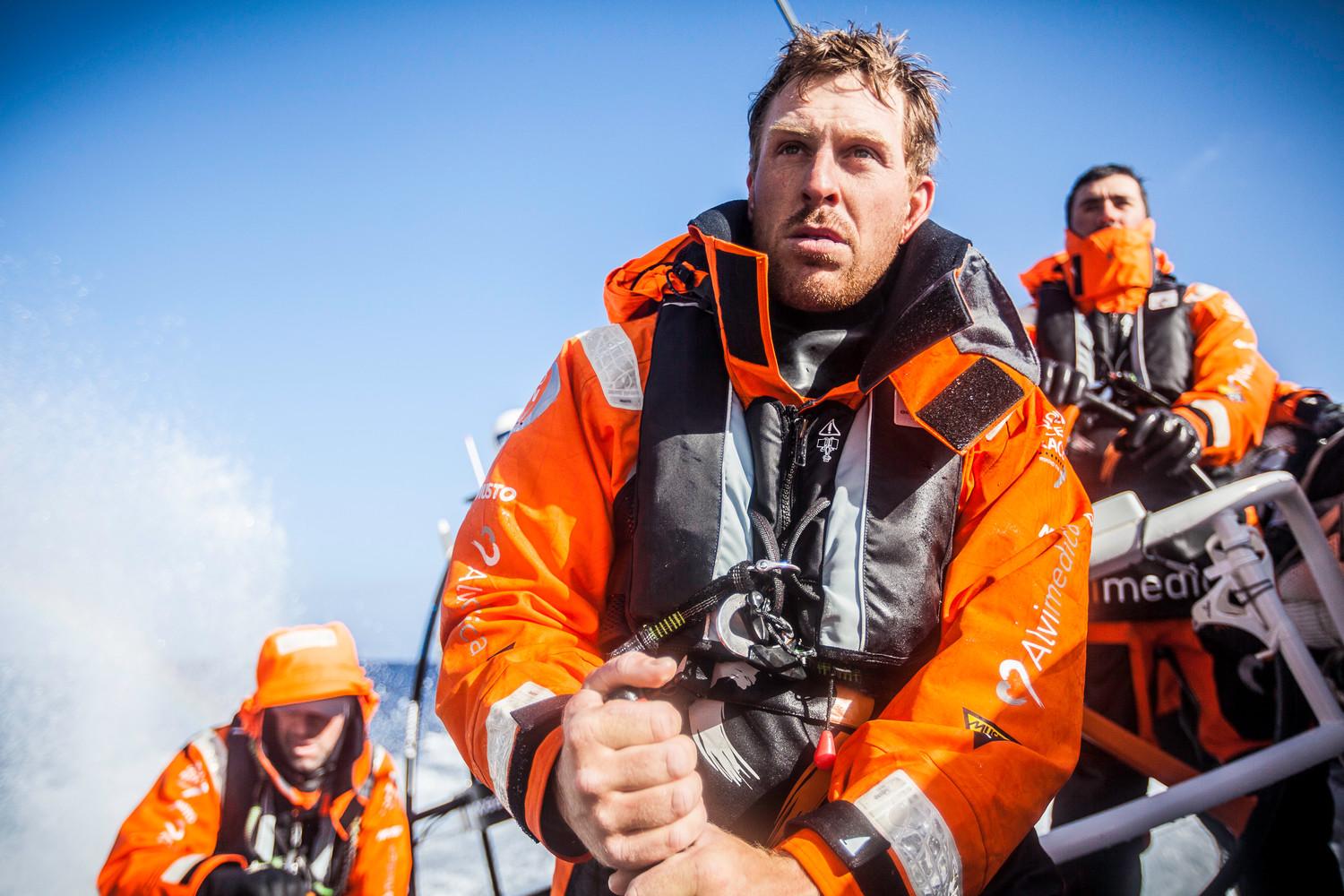
WORLD CLASS SAILOR DAVE SWETE JOINS NORTH SAILS
North Sails announced today that Volvo Ocean Race and America’s Cup World Series sailor and former North Sails sailmaker, Dave Swete has returned to North Sails as a sales representative in the UK. Originally from Auckland, New Zealand, Swete has been an onboard trimmer for two Volvo Ocean Race teams, most recently Team Alvimedica in the 2014-15 race. He has raced in almost every major offshore race during his professional sailing career and won the World Match Racing Tour in 2009 with Adam Minoprio.
“We are thrilled Dave has chosen to return to North Sails after an 8-year professional sailing hiatus that offered him many impressive experiences and victories,” said Bob Lankester, sales manager for North Sails in Europe. “He has competed in the Volvo Ocean Race twice, two America’s Cup World Series events, the World Match Racing Tour, and is a regular in the Mini Maxi 72 fleet, to name a few of his many accomplishments. He is keen to bring his experience and skills back to the North family and we are happy to have him return to our team here in the UK,” Lankester continued. Dave, commonly known as ‘Sweety’, “particularly enjoys passing his knowledge onto clients and ensuring they are having fun and getting the most out of their North sails,” Lankester concluded.
“Having sailed every leg of the Volvo Ocean Race 2014-2015 and being in charge of onboard sail repairs, I was truly impressed with how little work was needed on the sails during the race,” Swete said. “This included a North 3Di mainsail that held its shape remarkably with over 40,000 miles sailed, leaving me to believe we could do another lap of the planet with the same sail! This really opened my eyes to how special a company North Sails is, from sail design to innovative products, to the finishing touches and support network. It it an absolute honor to be re-joining such an awesome company.”
“Dave Swete is a very versatile sailor and sailmaker,” said Charlie Enright, skipper of Team Alvimedica and North Sails representative. “He is competitive and committed to excellence which makes him a great fit with the North Sails team. Because he is experienced in sail care after working at North Sails in New Zealand, he understands the bridge between sail construction and sail performance which is a very unique skill set.”
READ MORE
READ MORE




